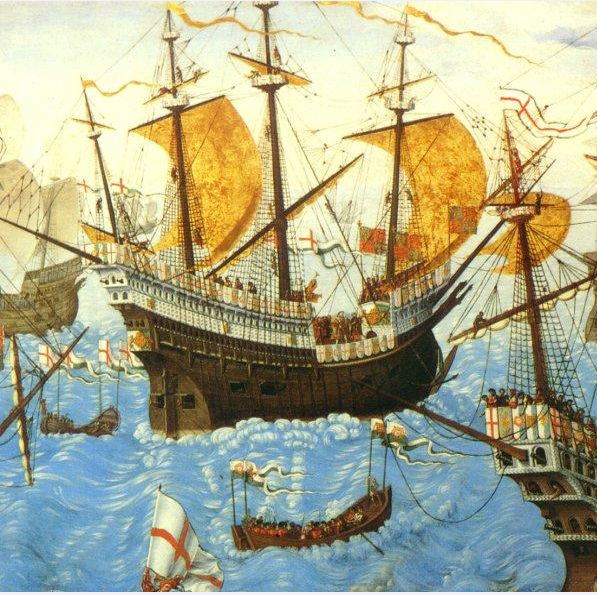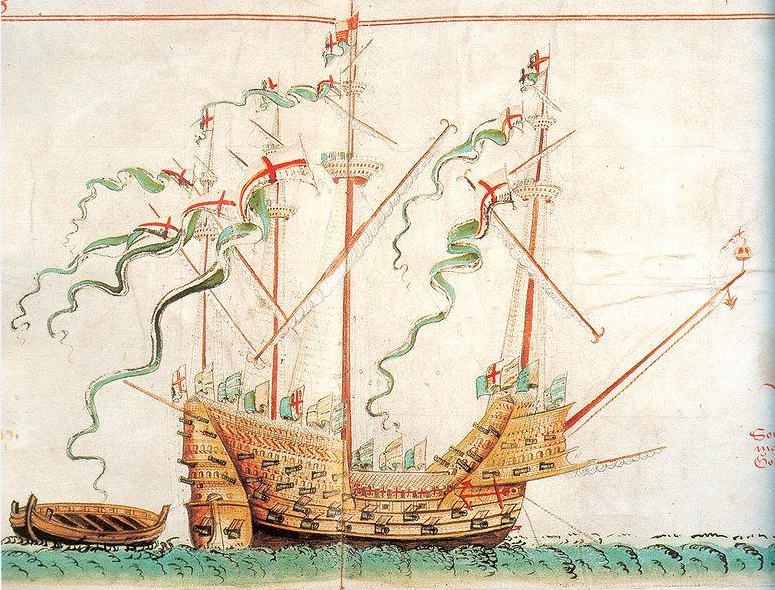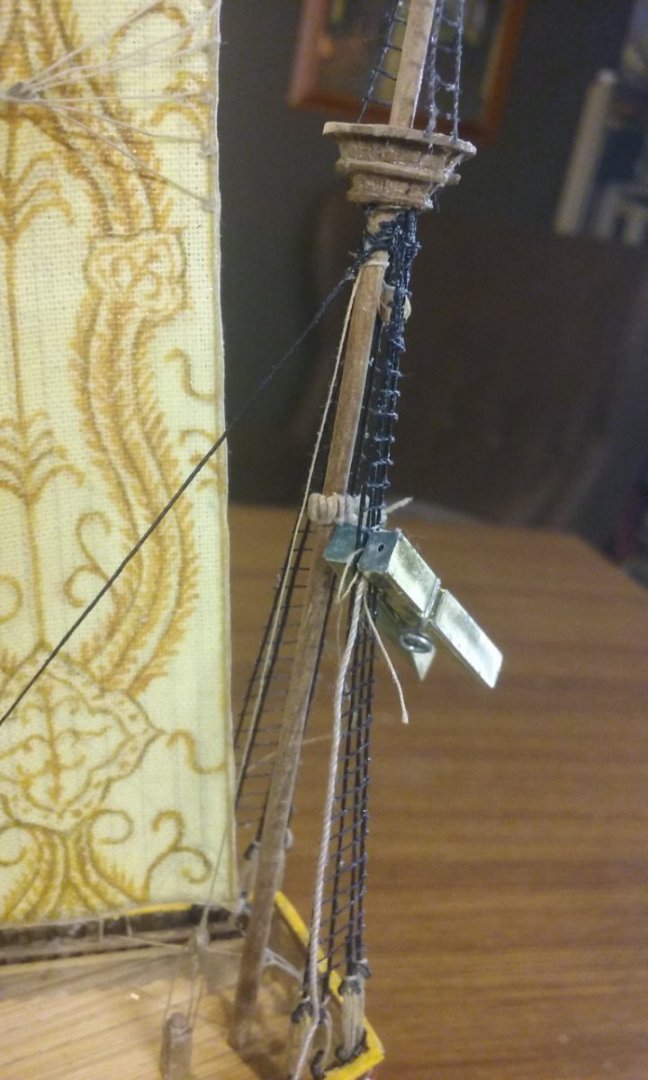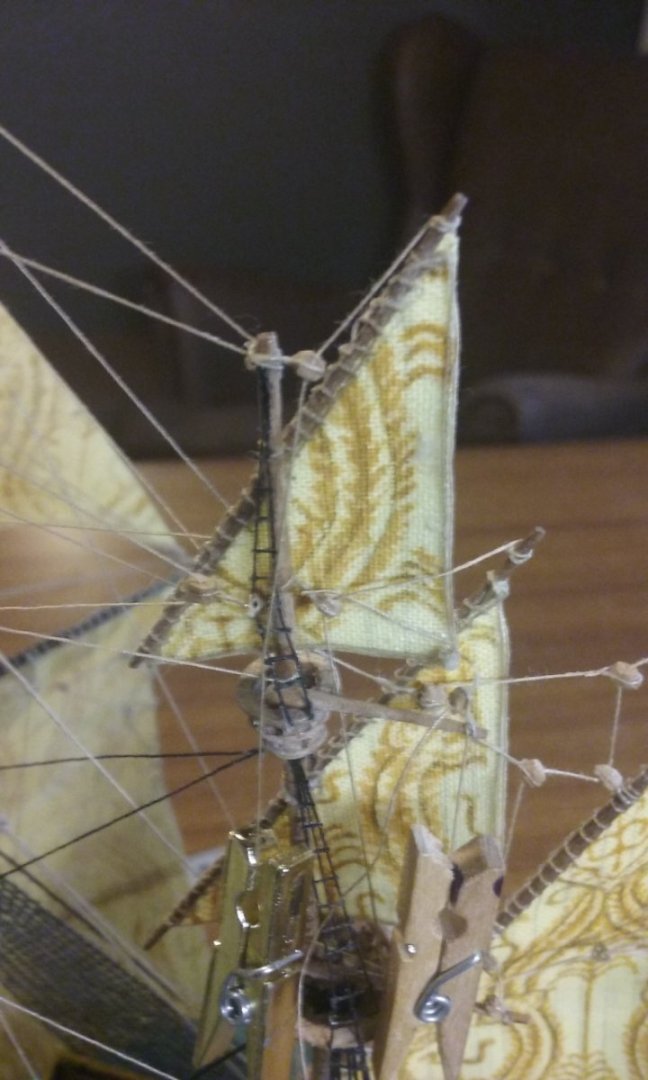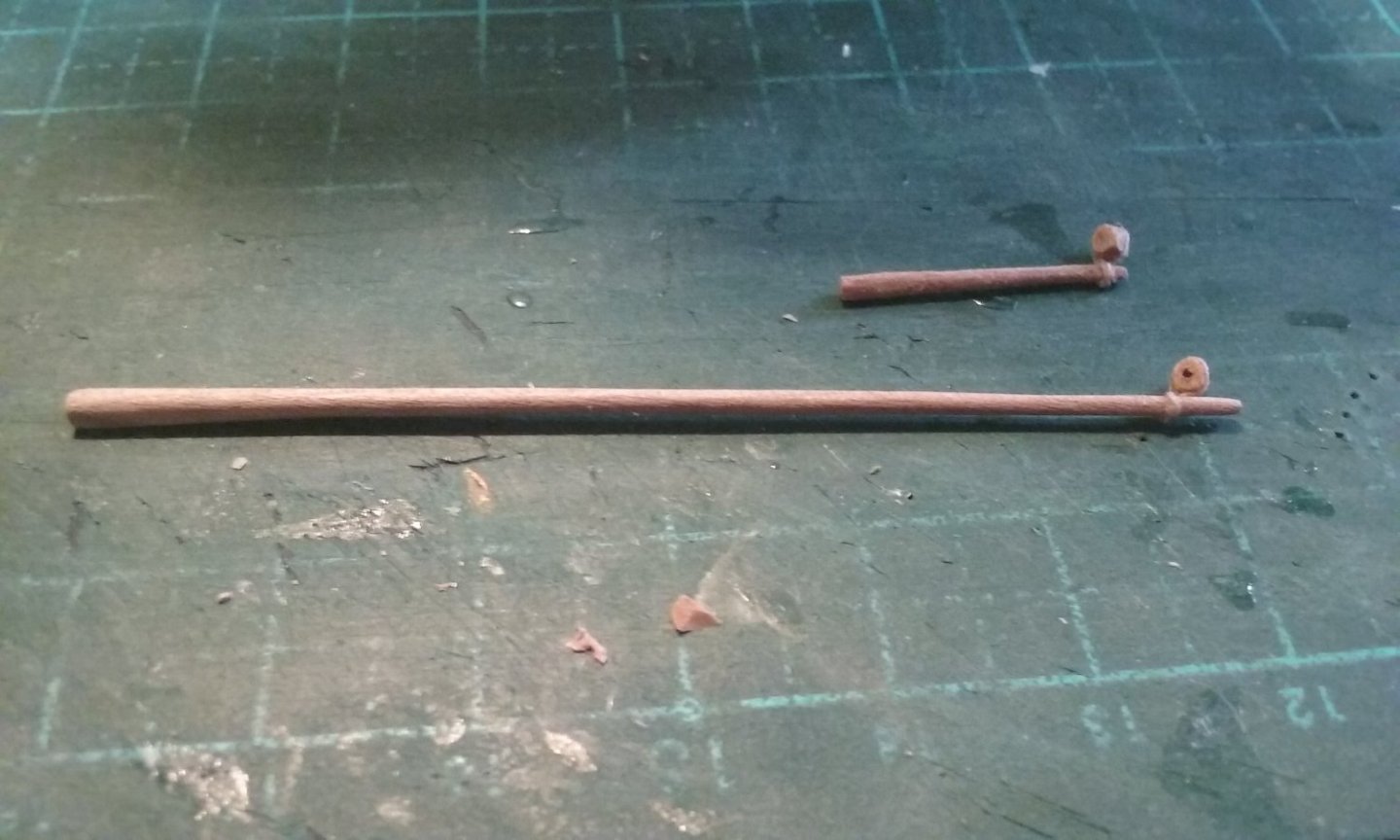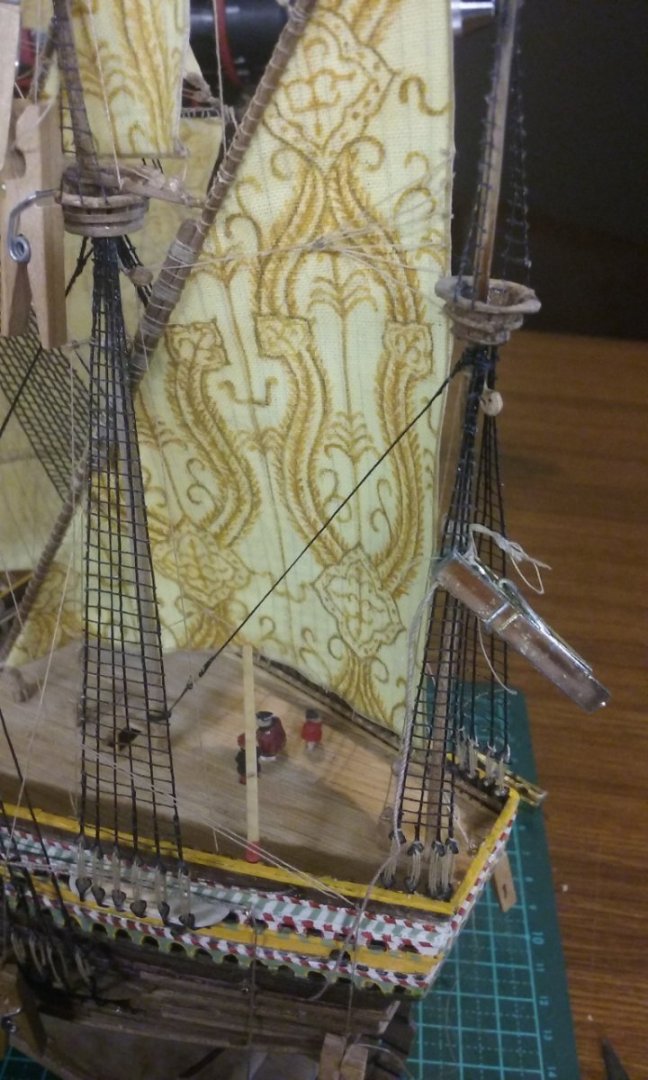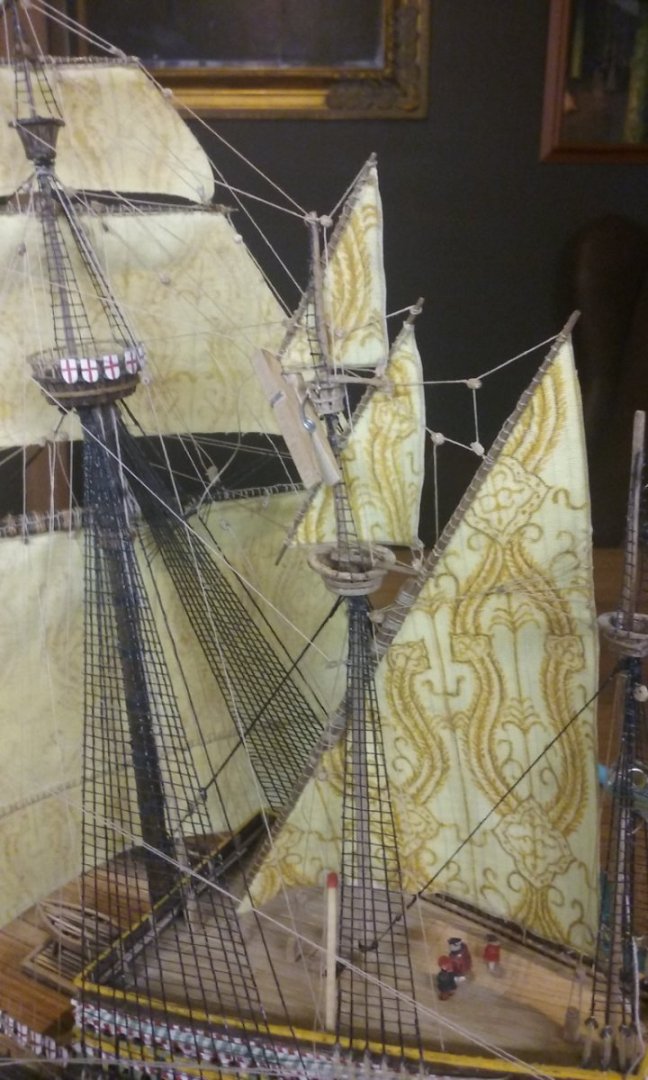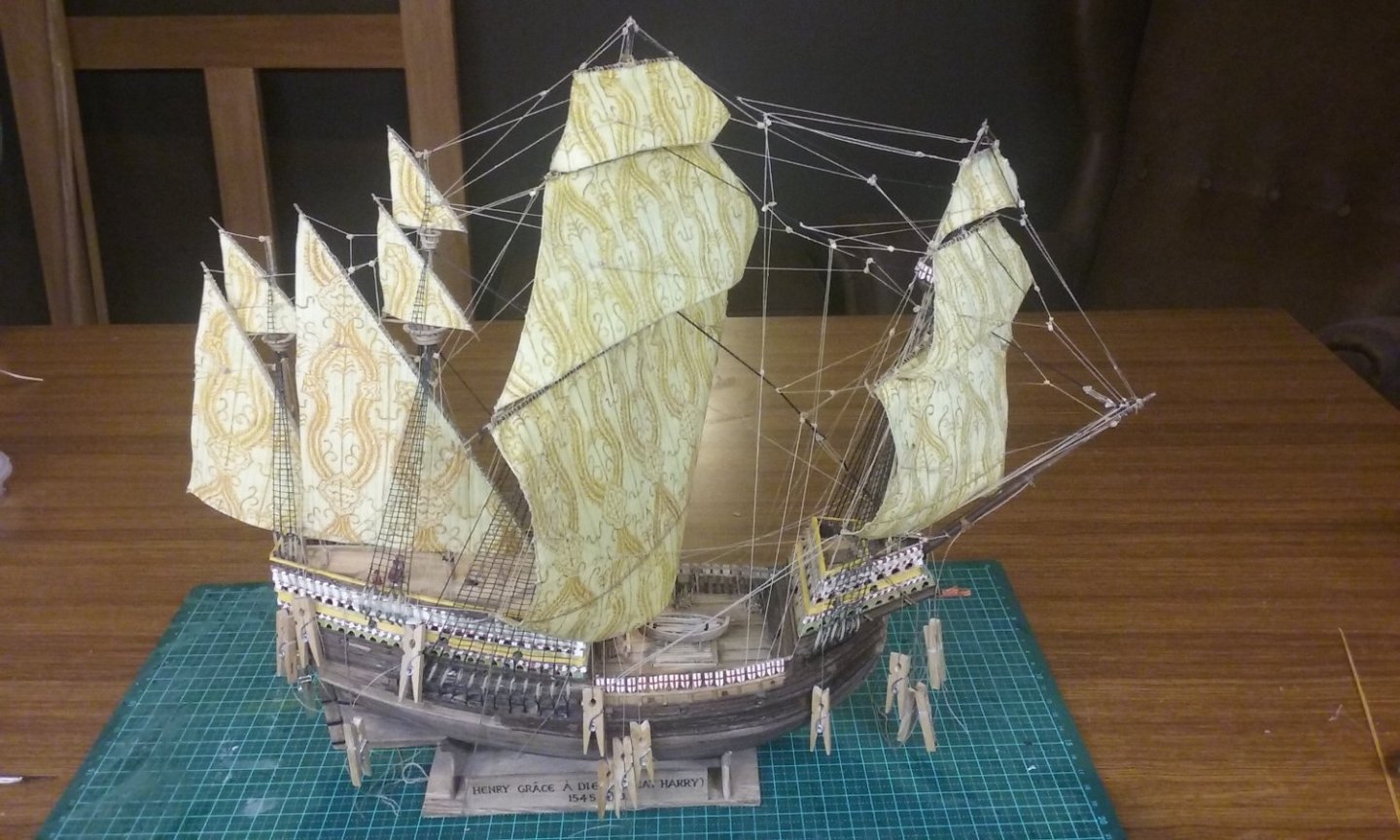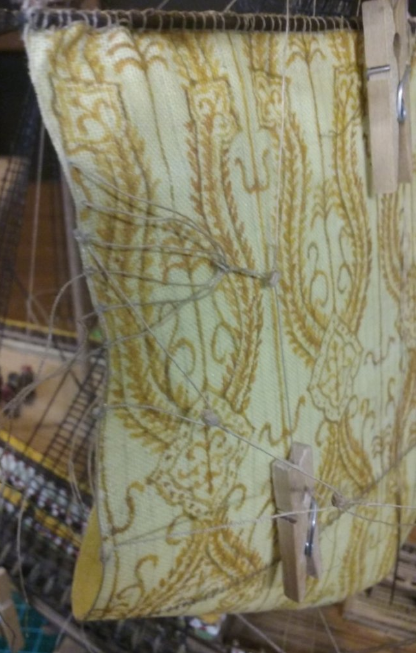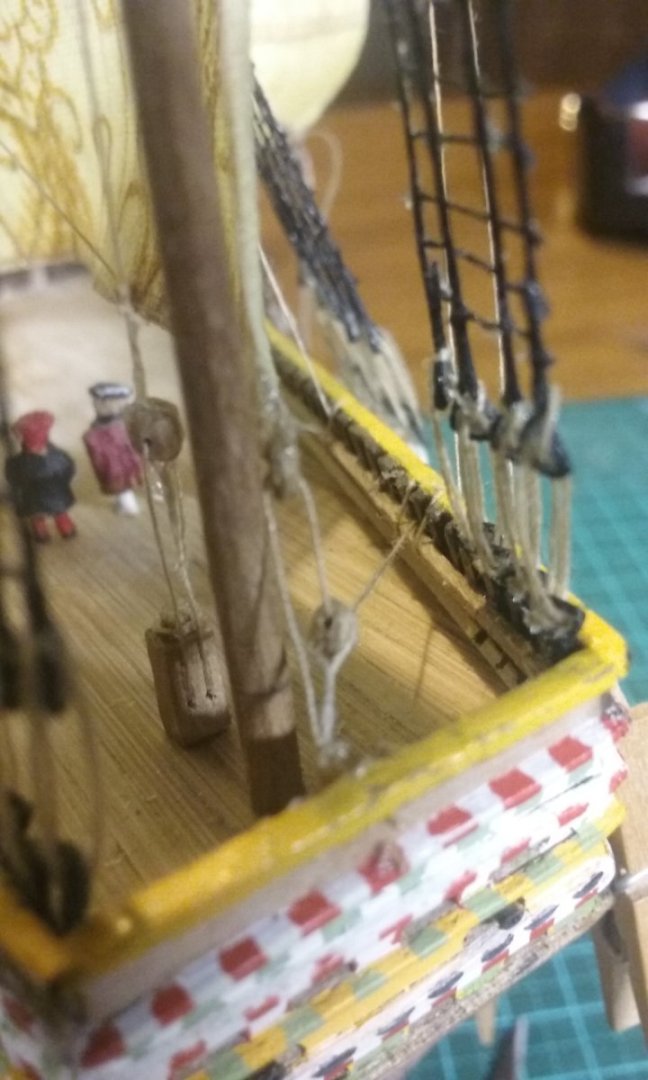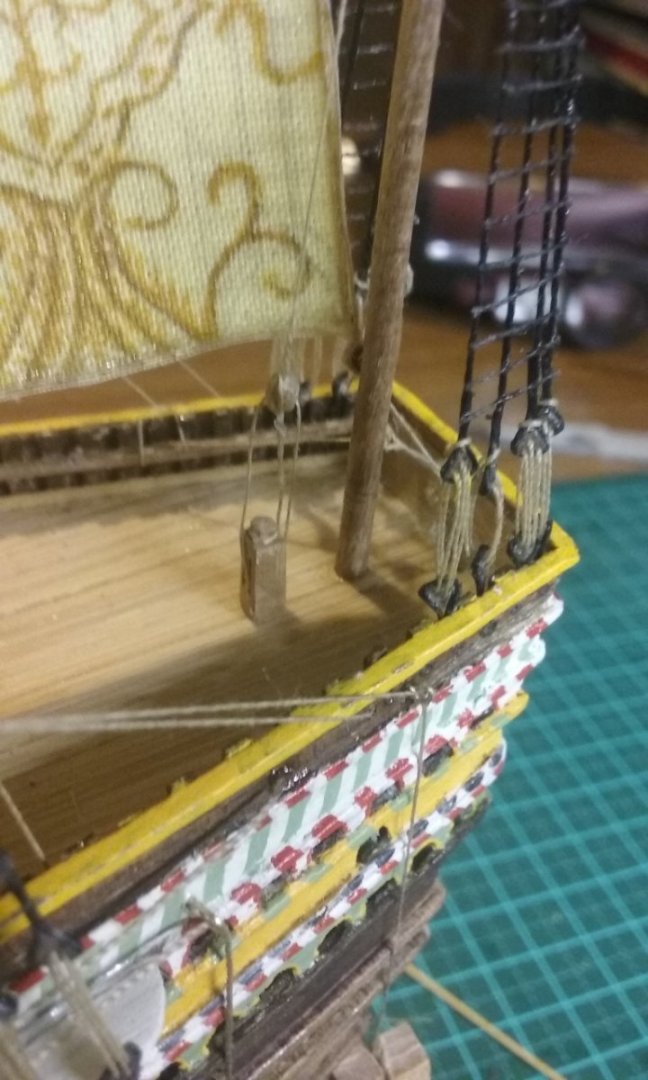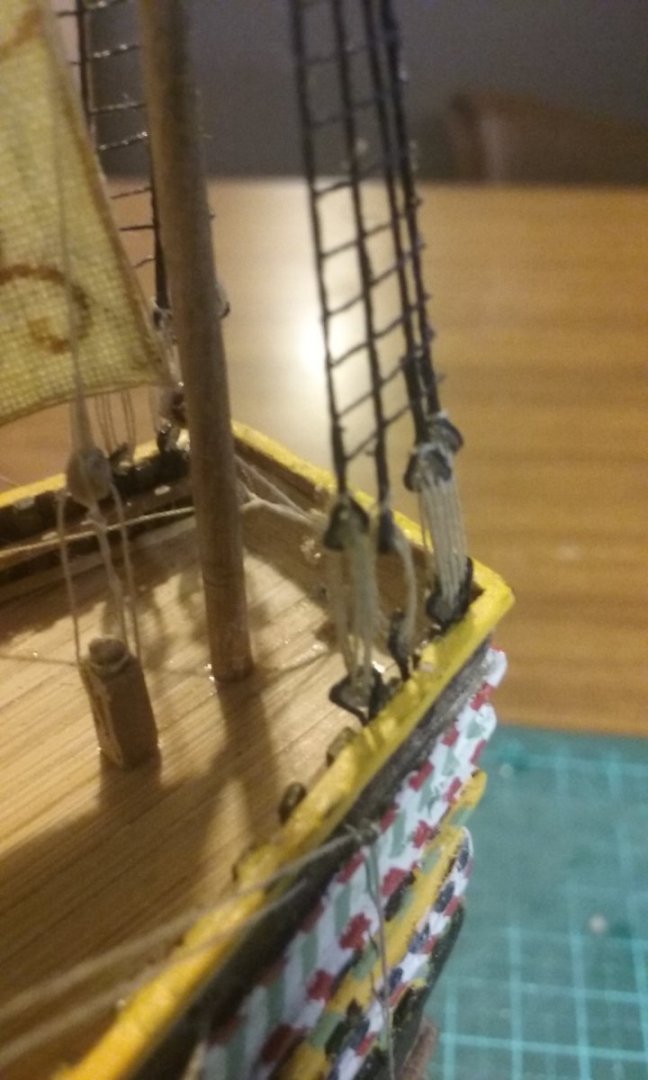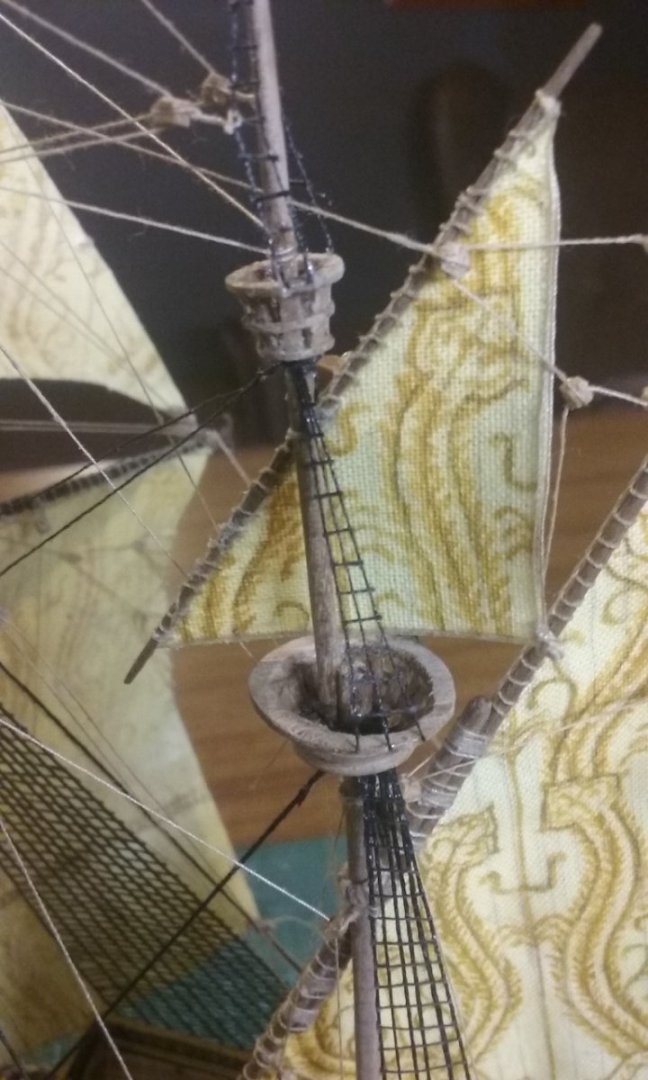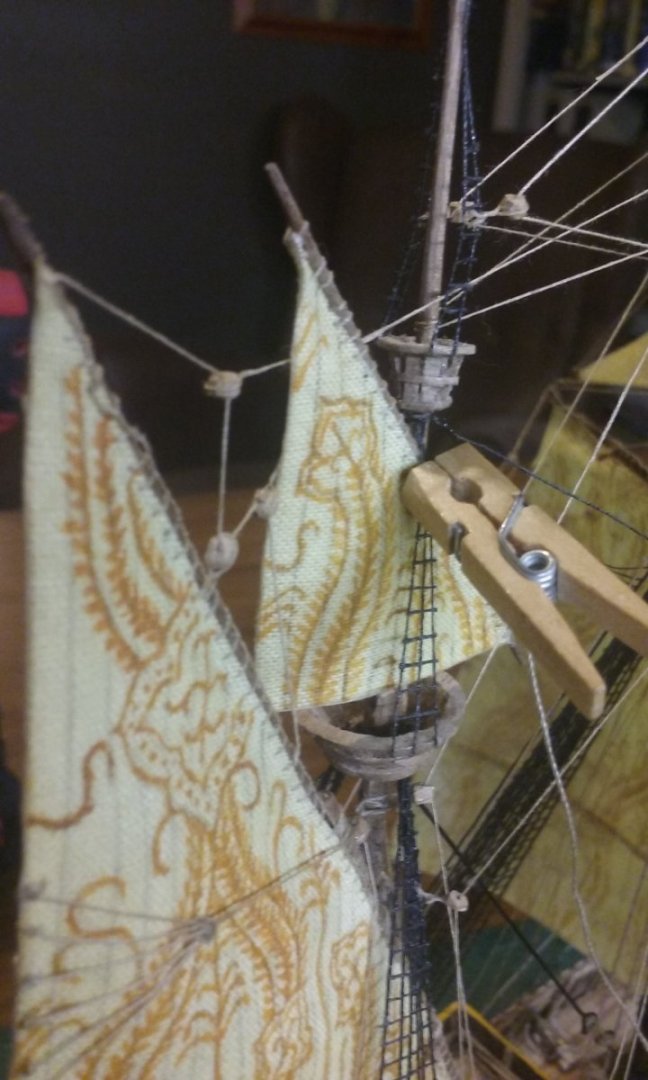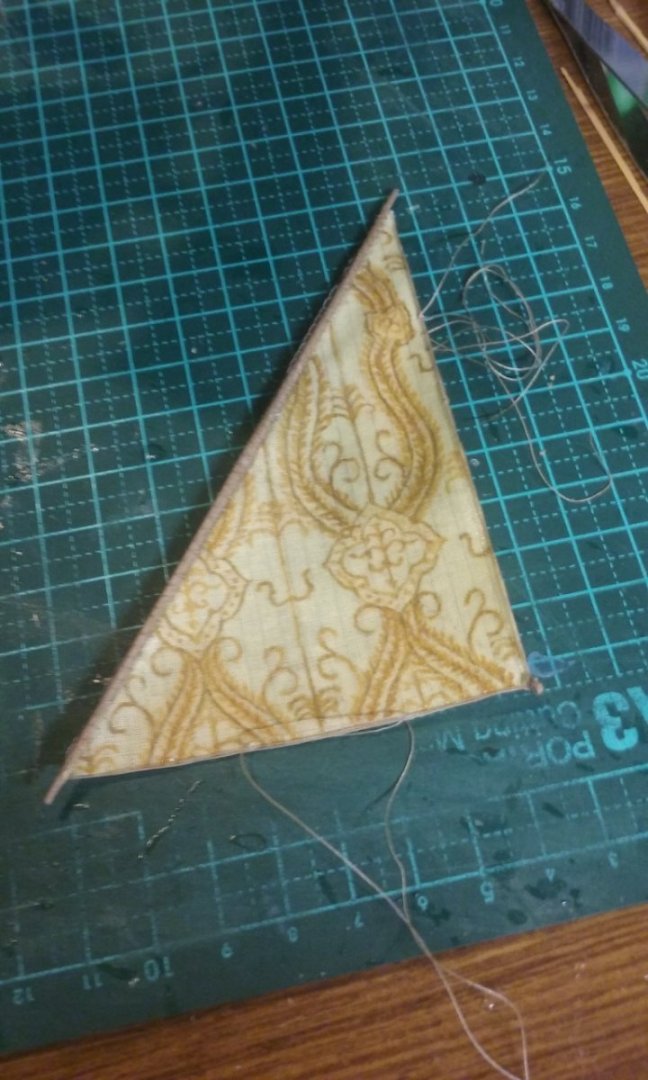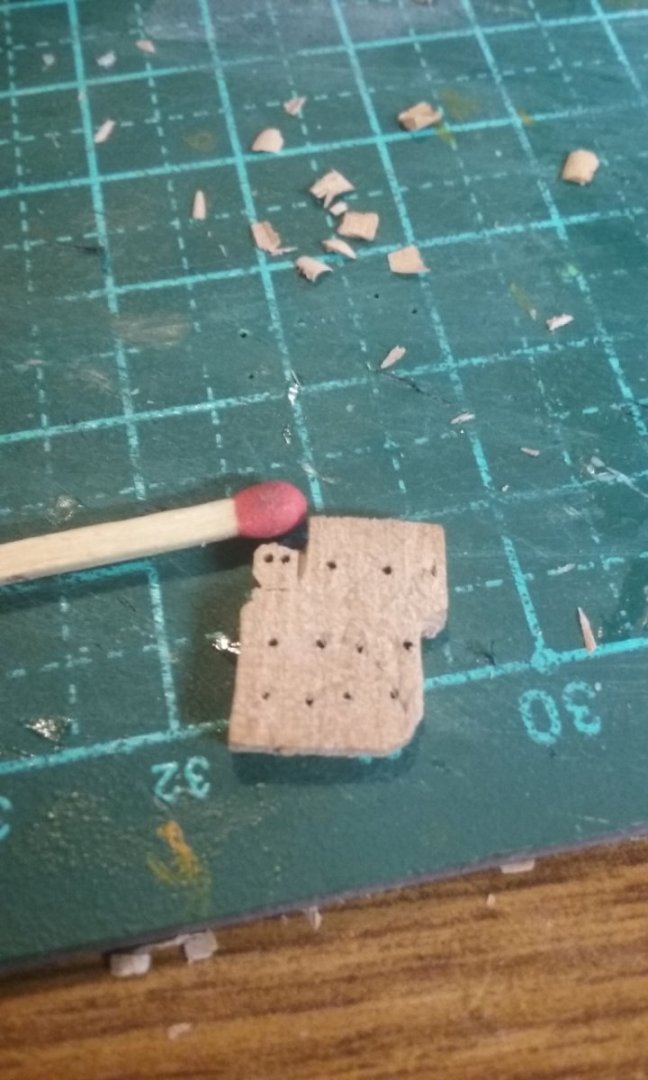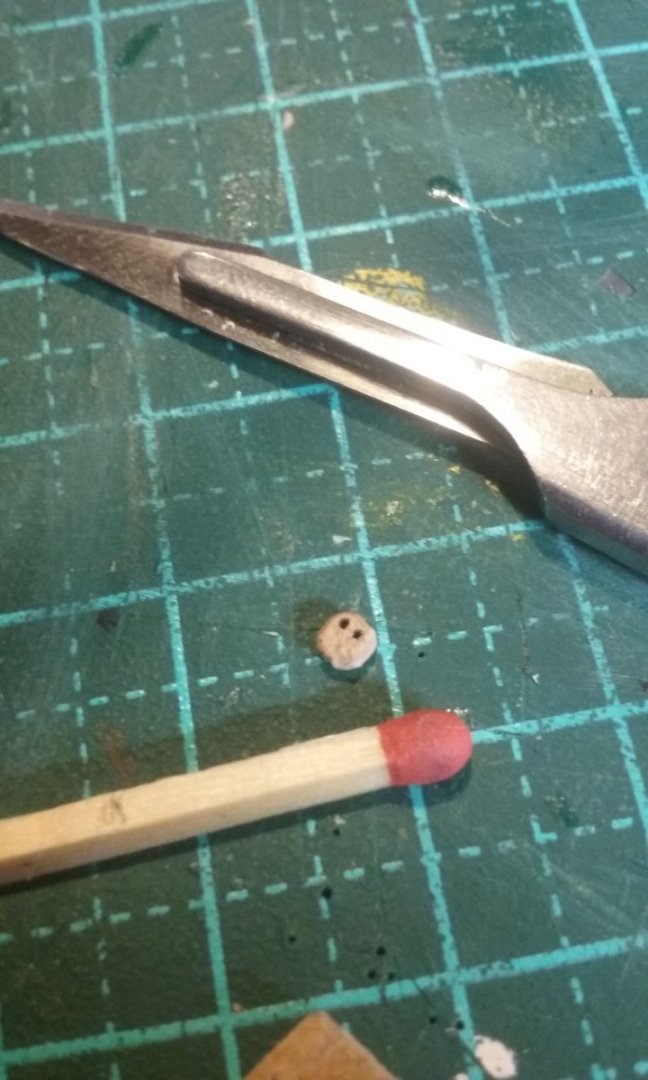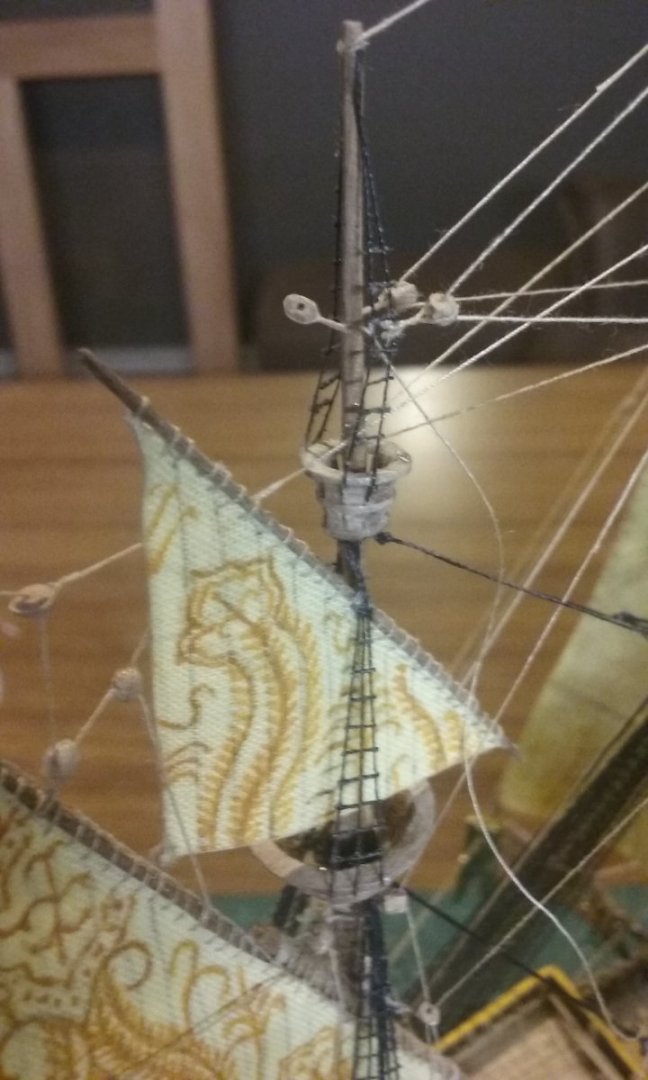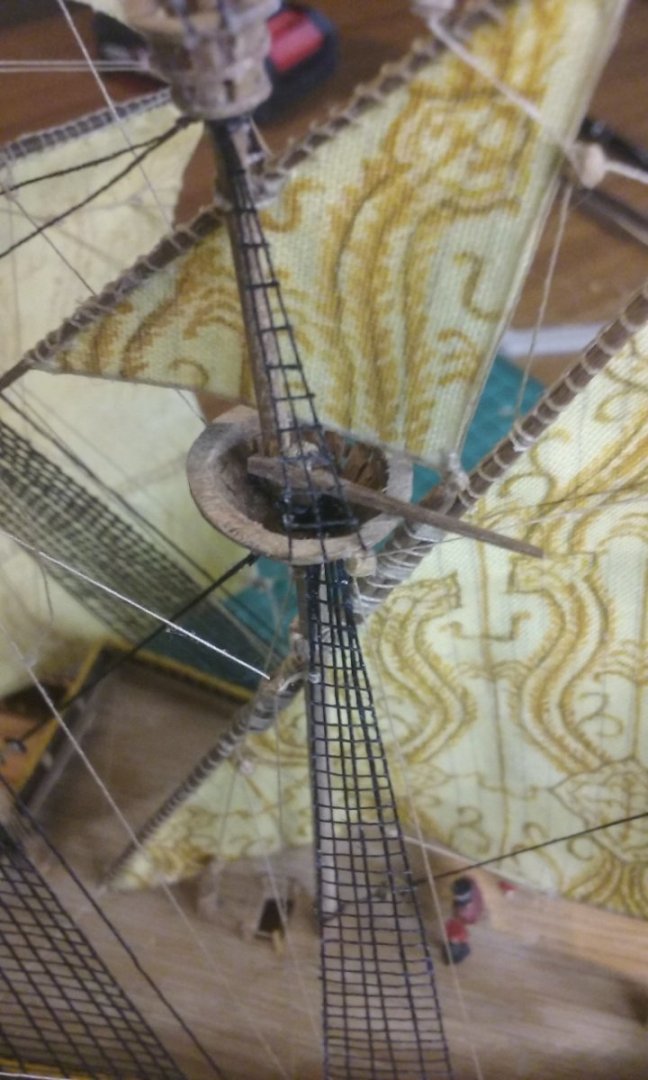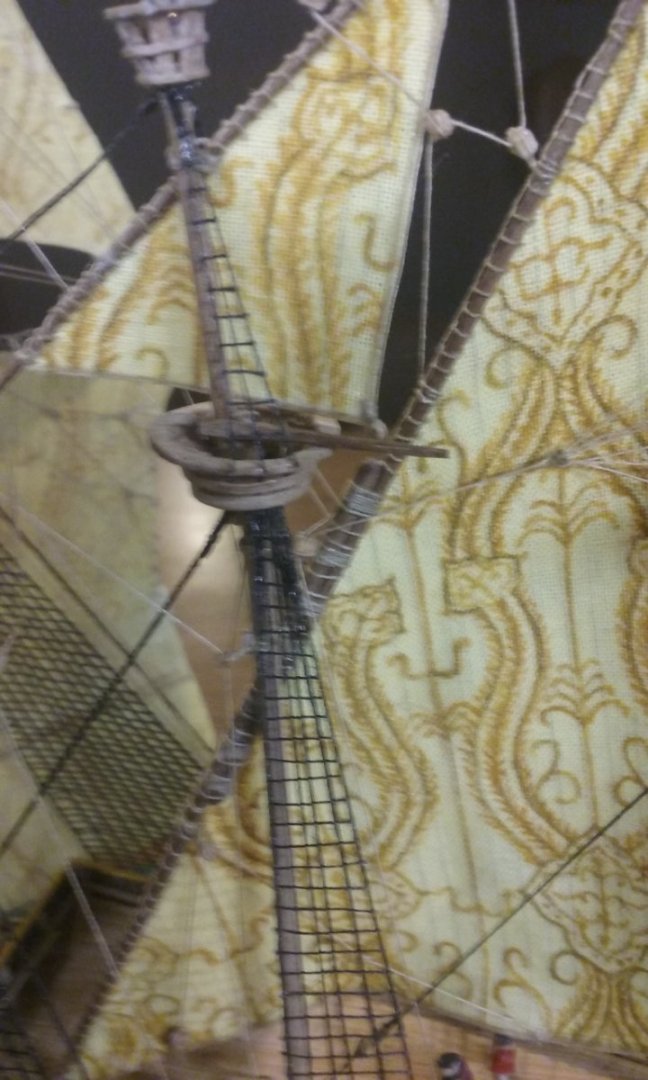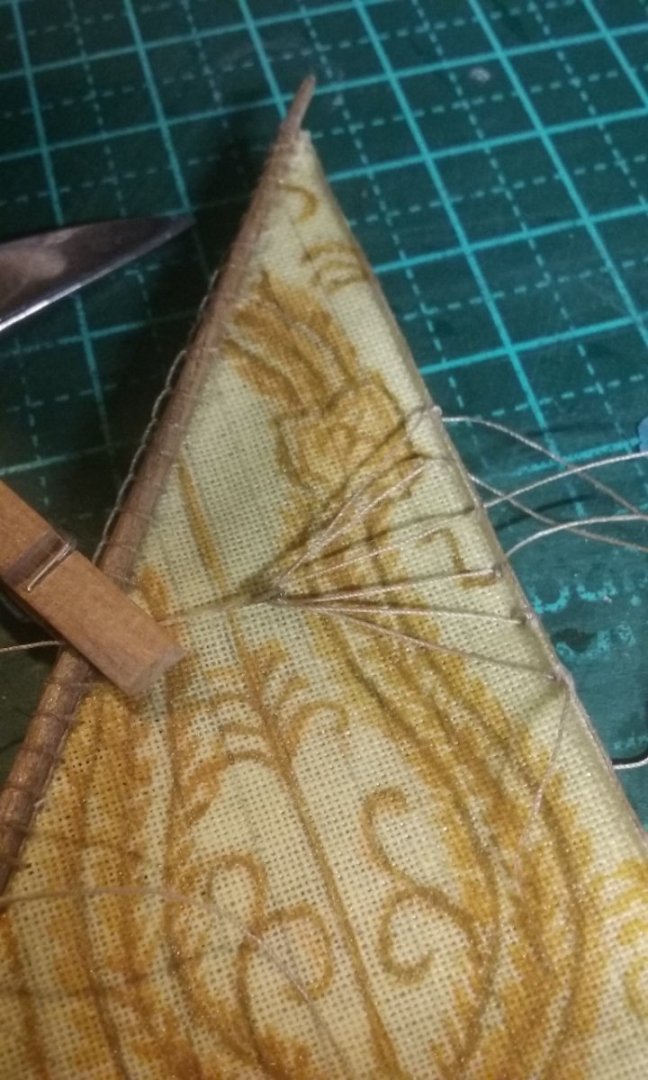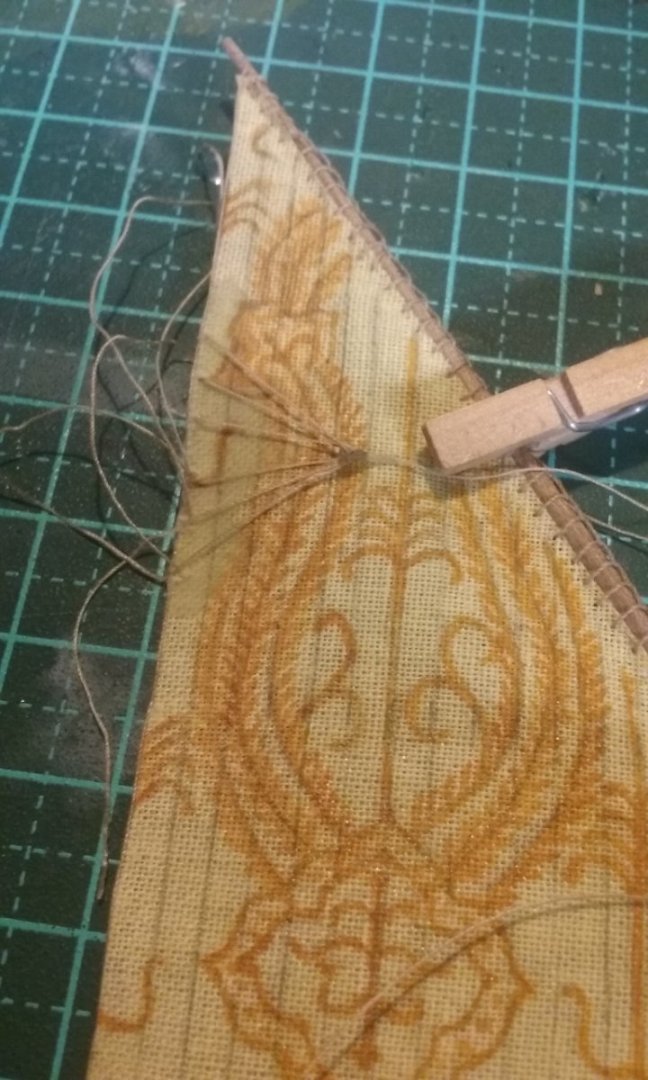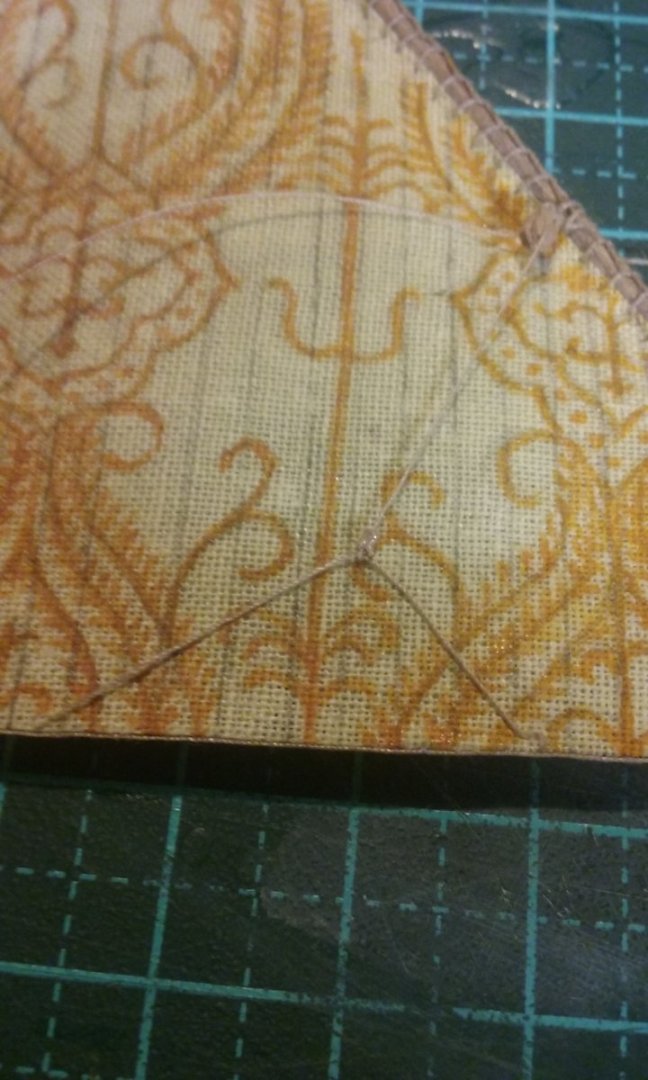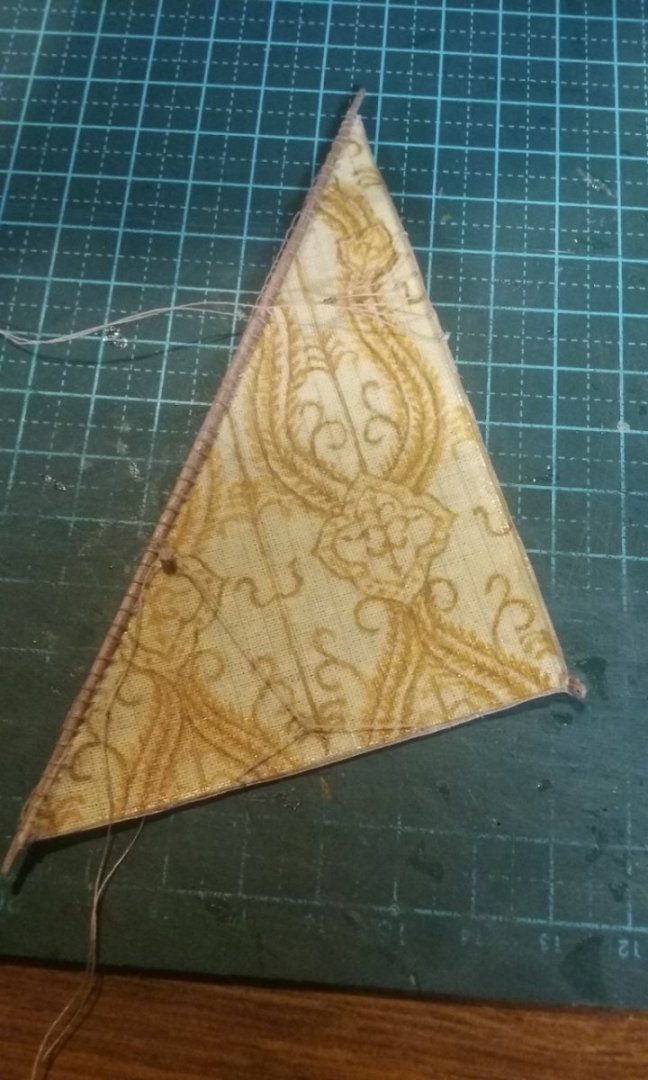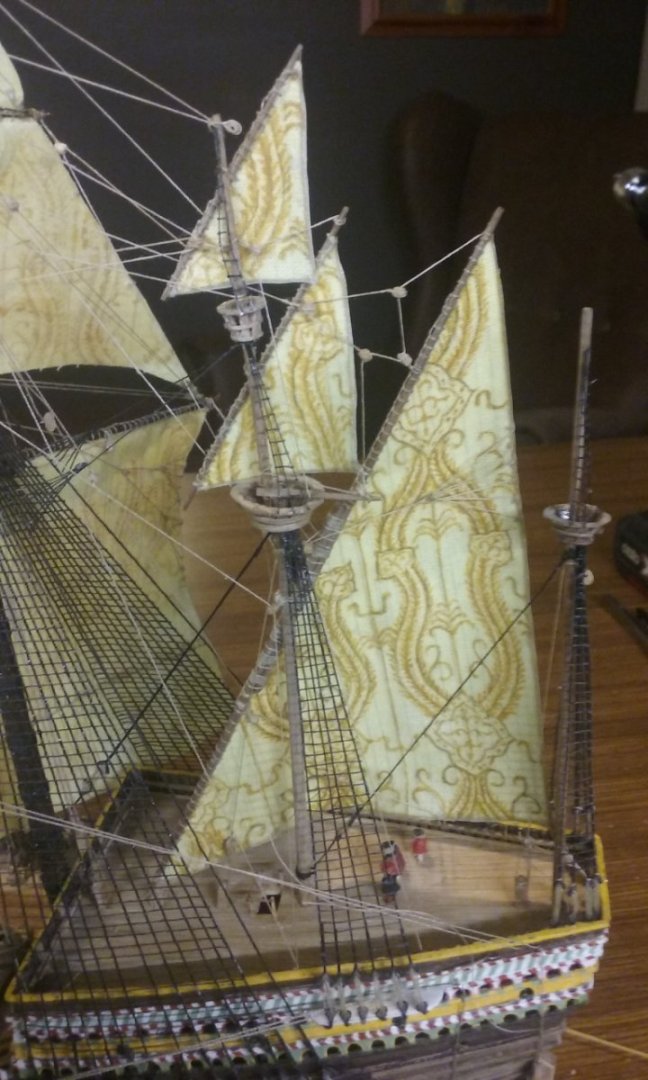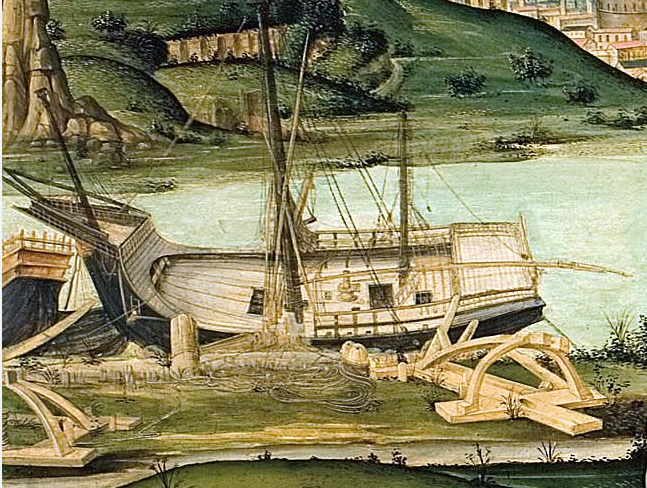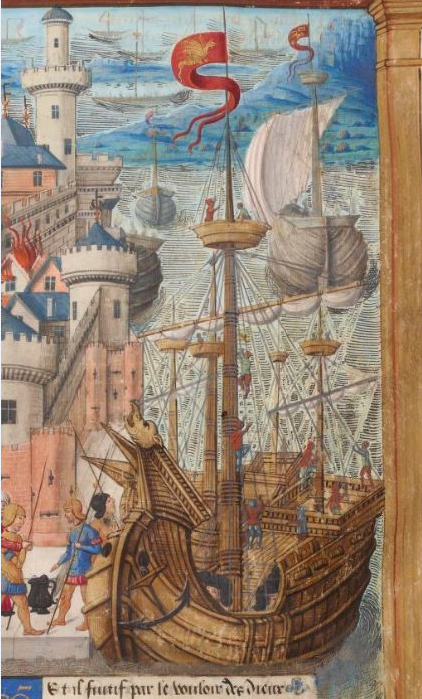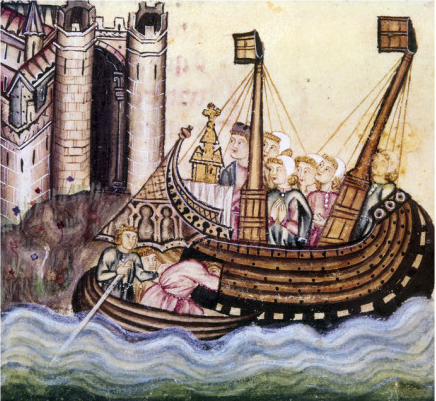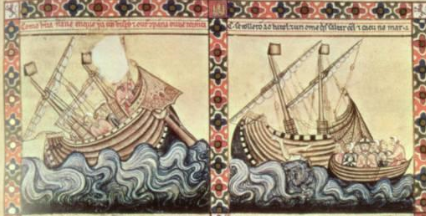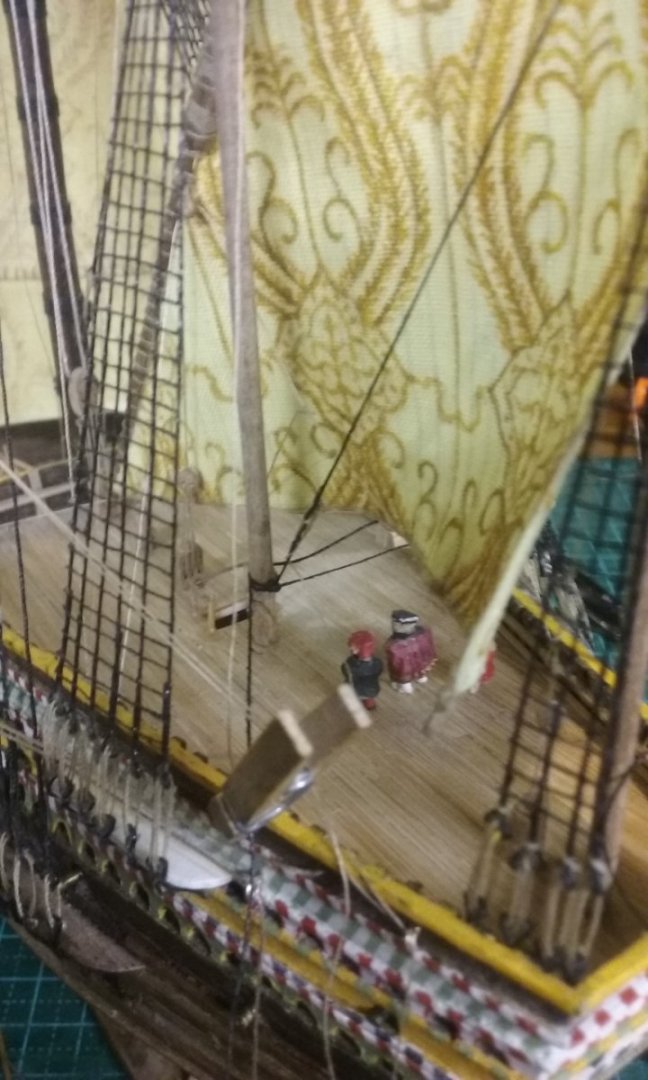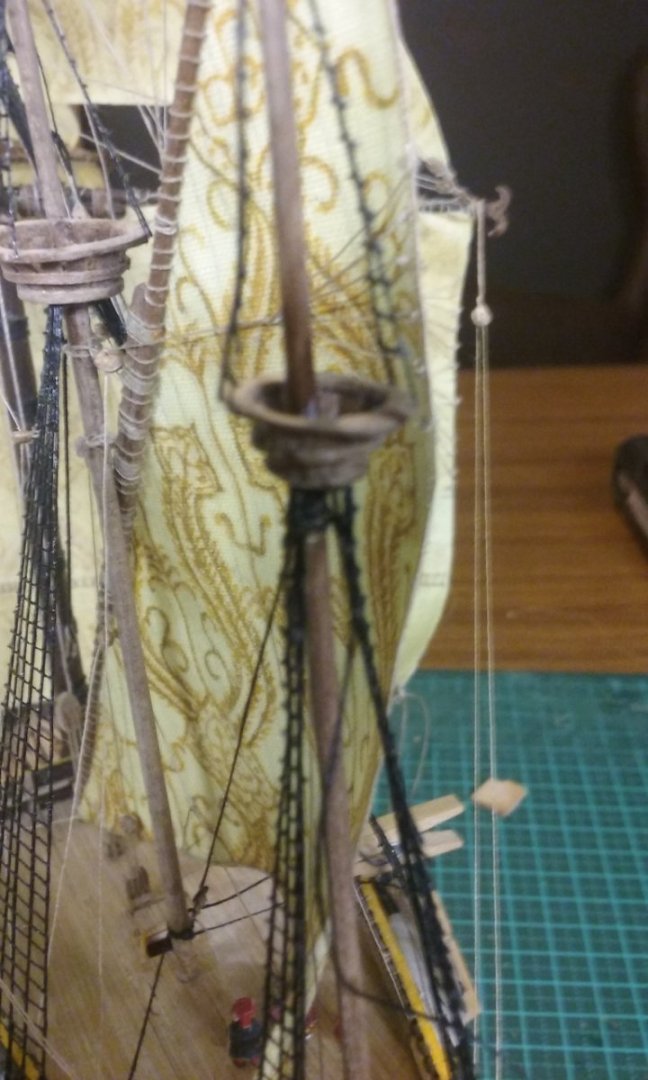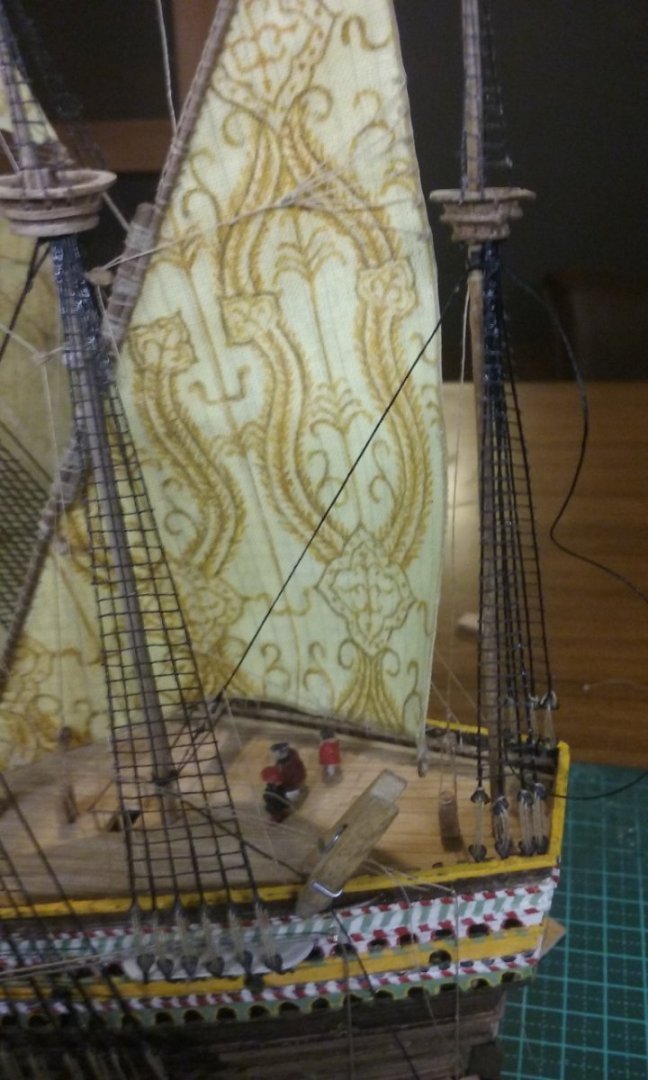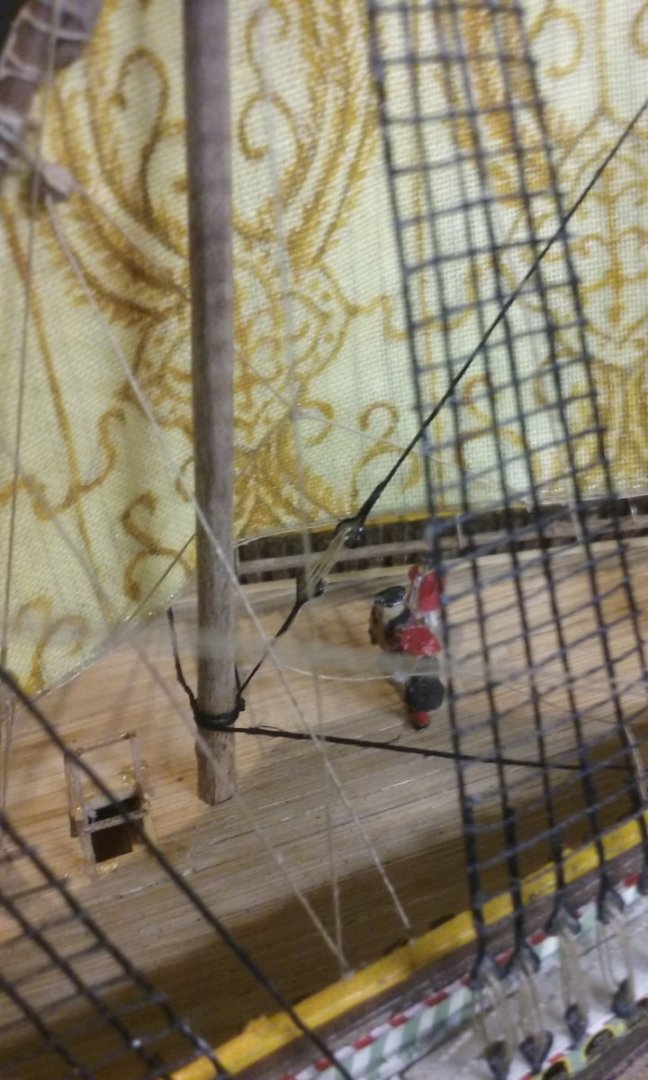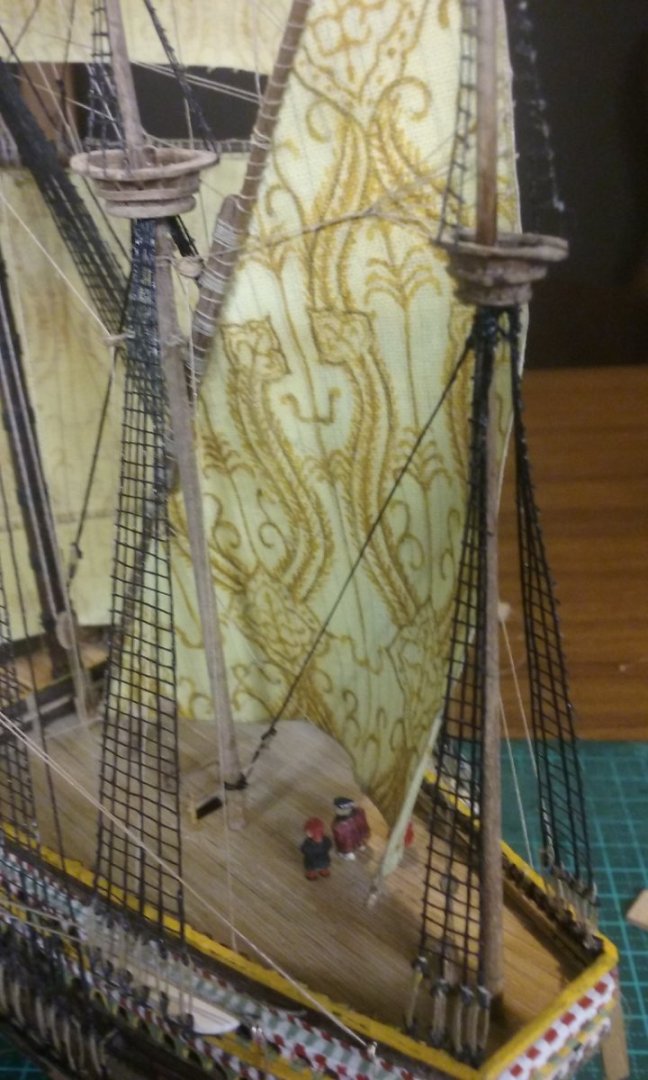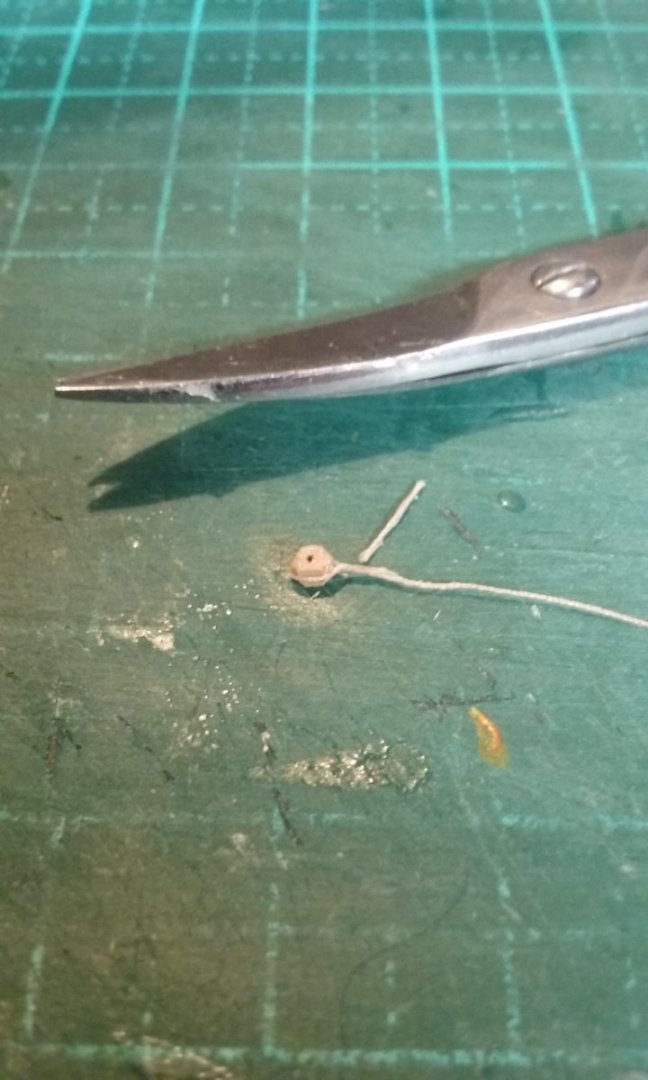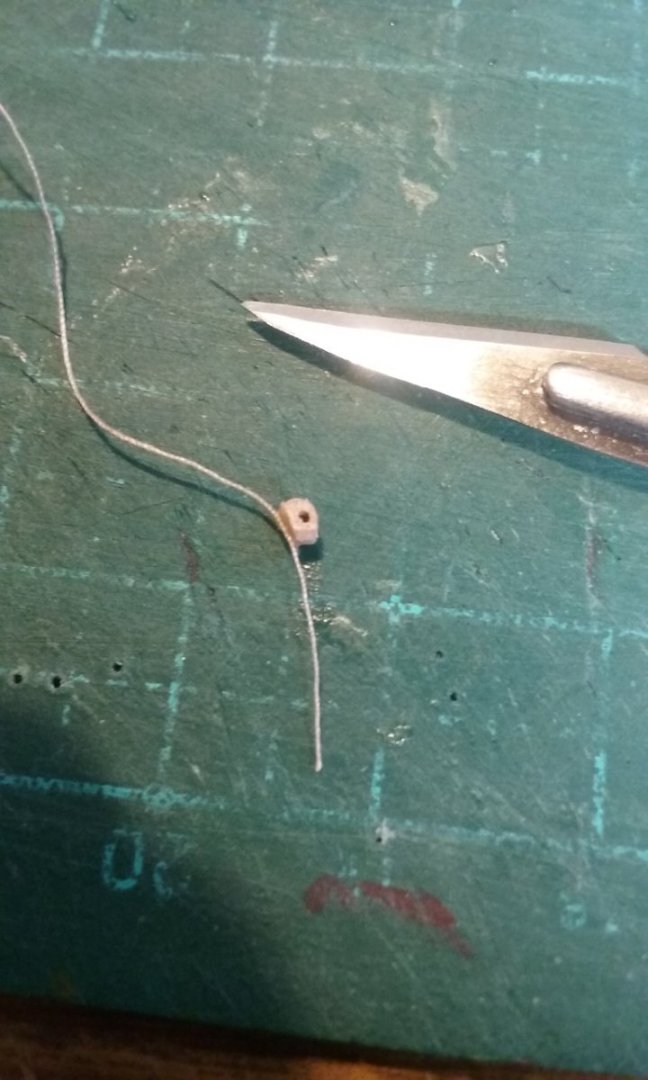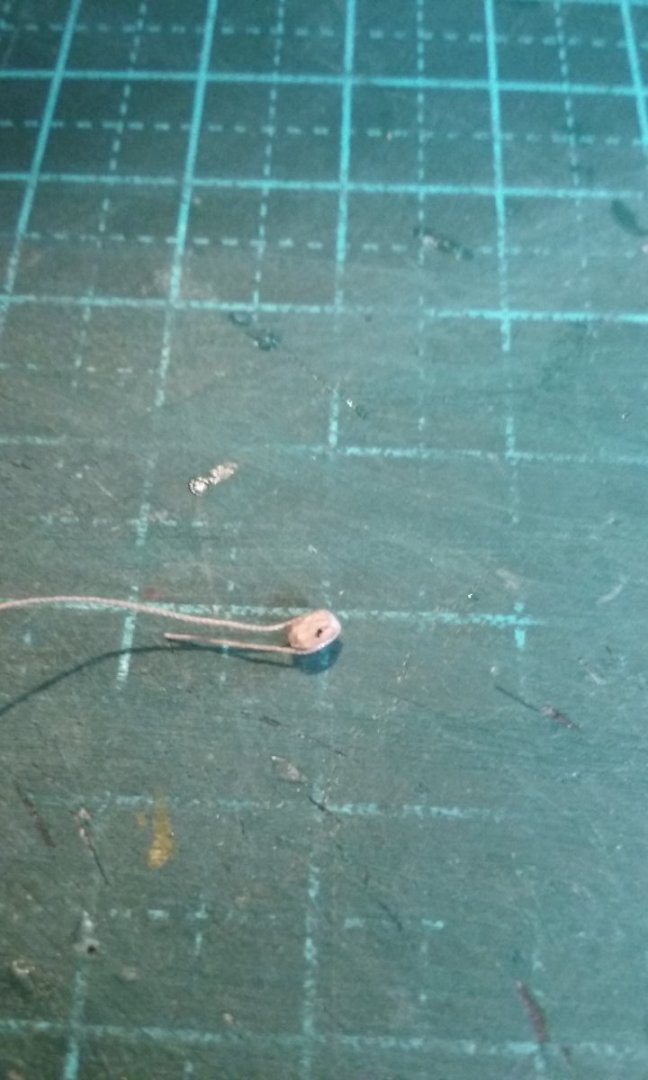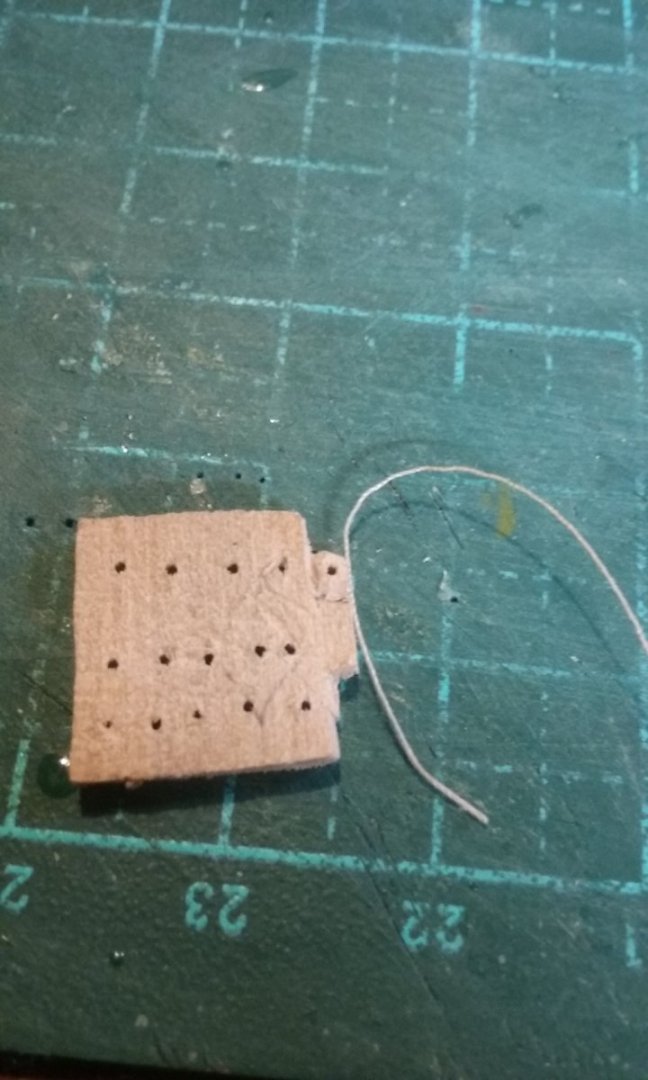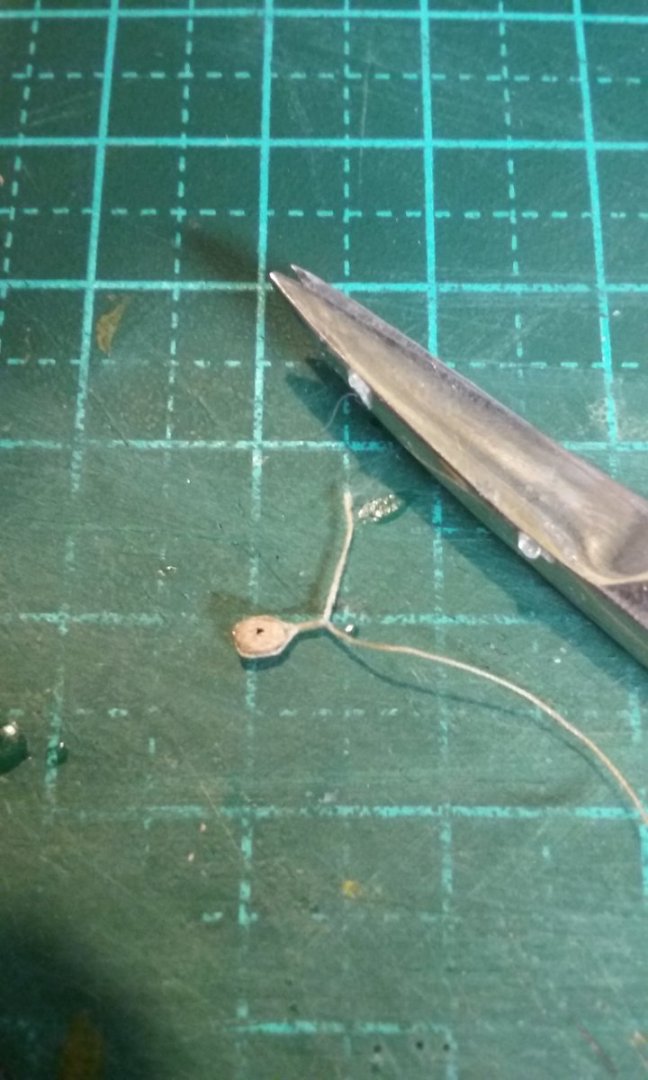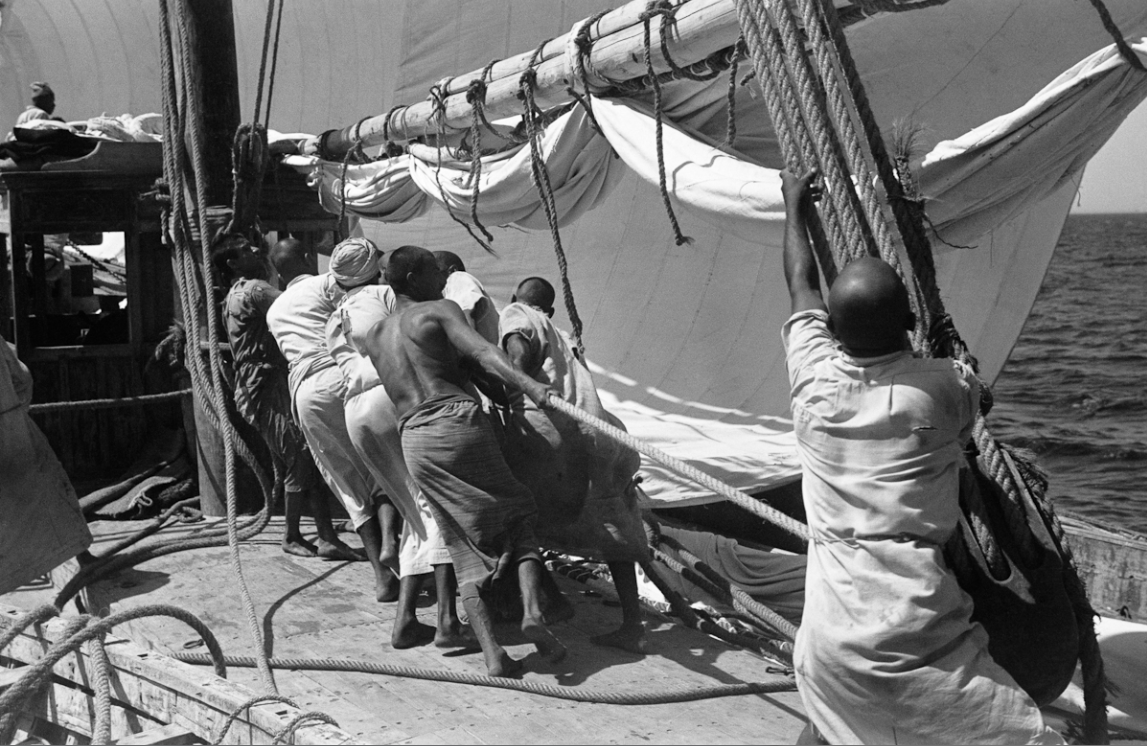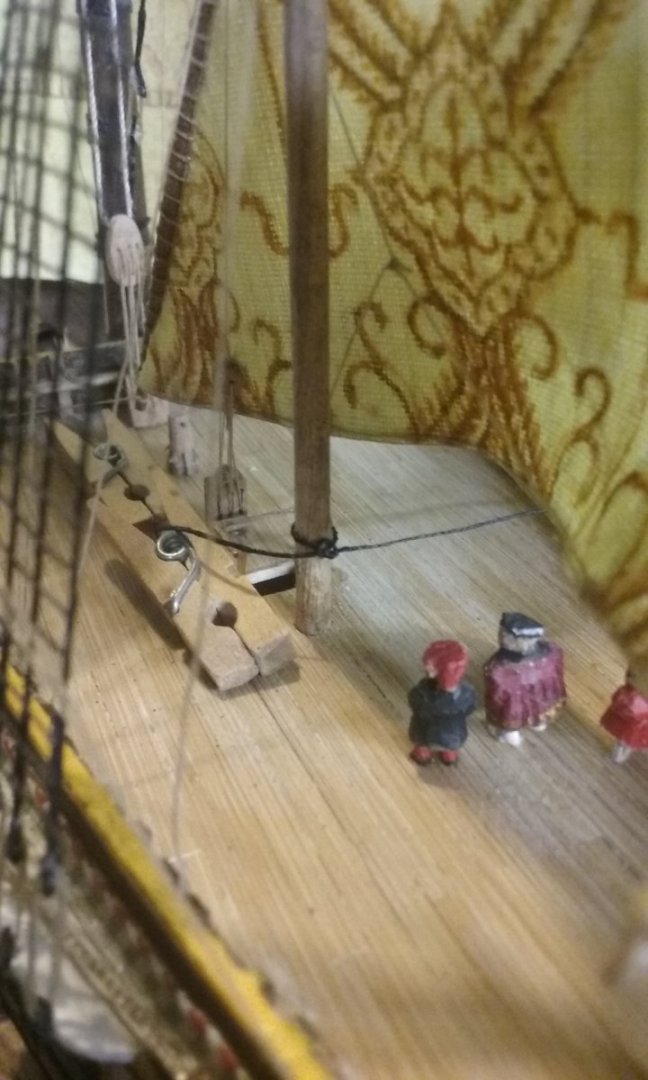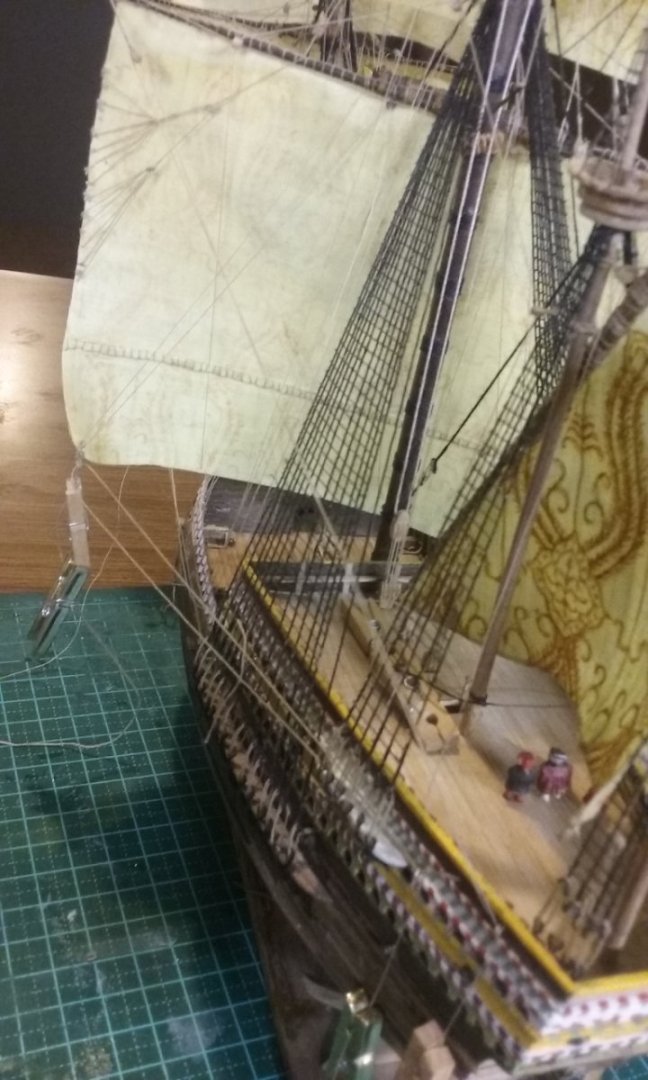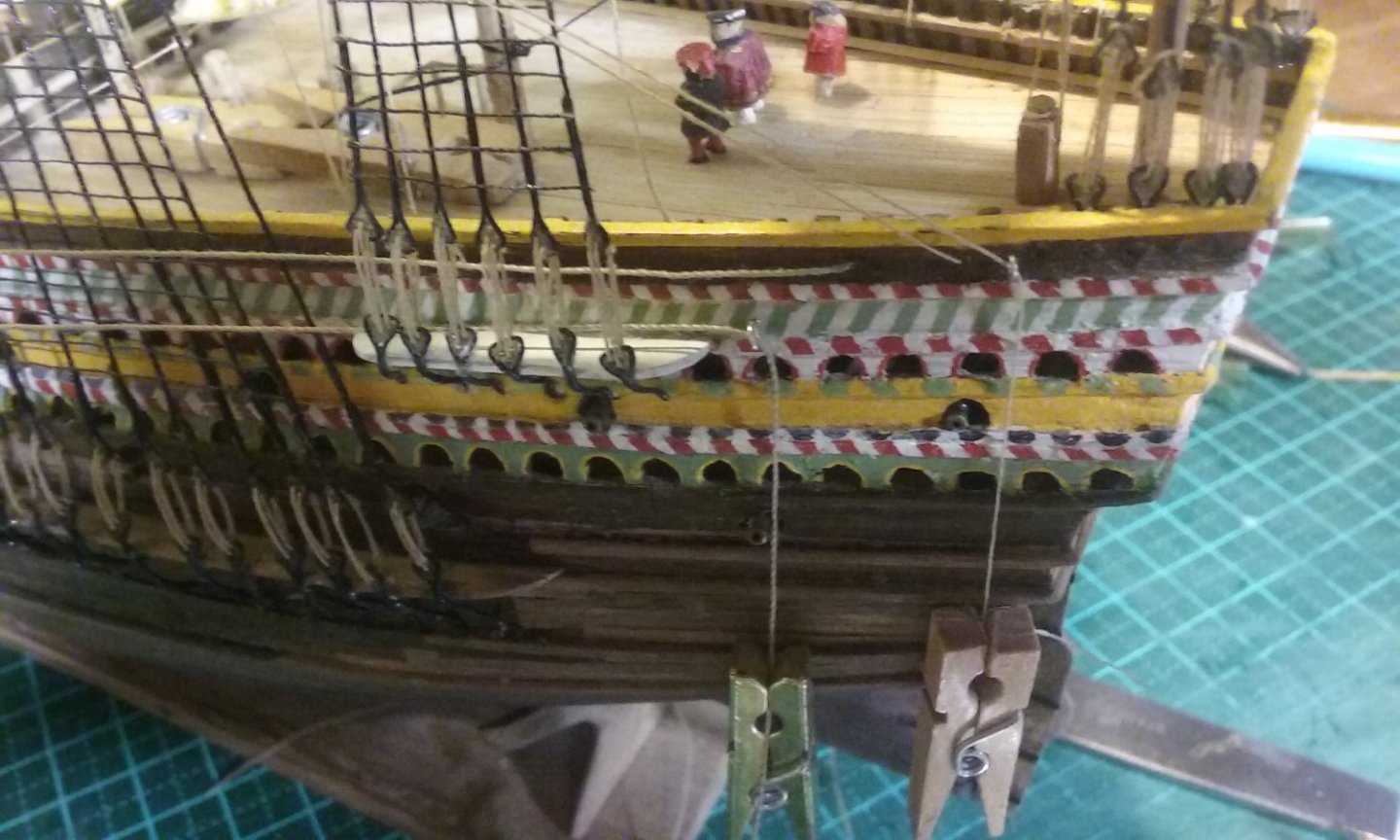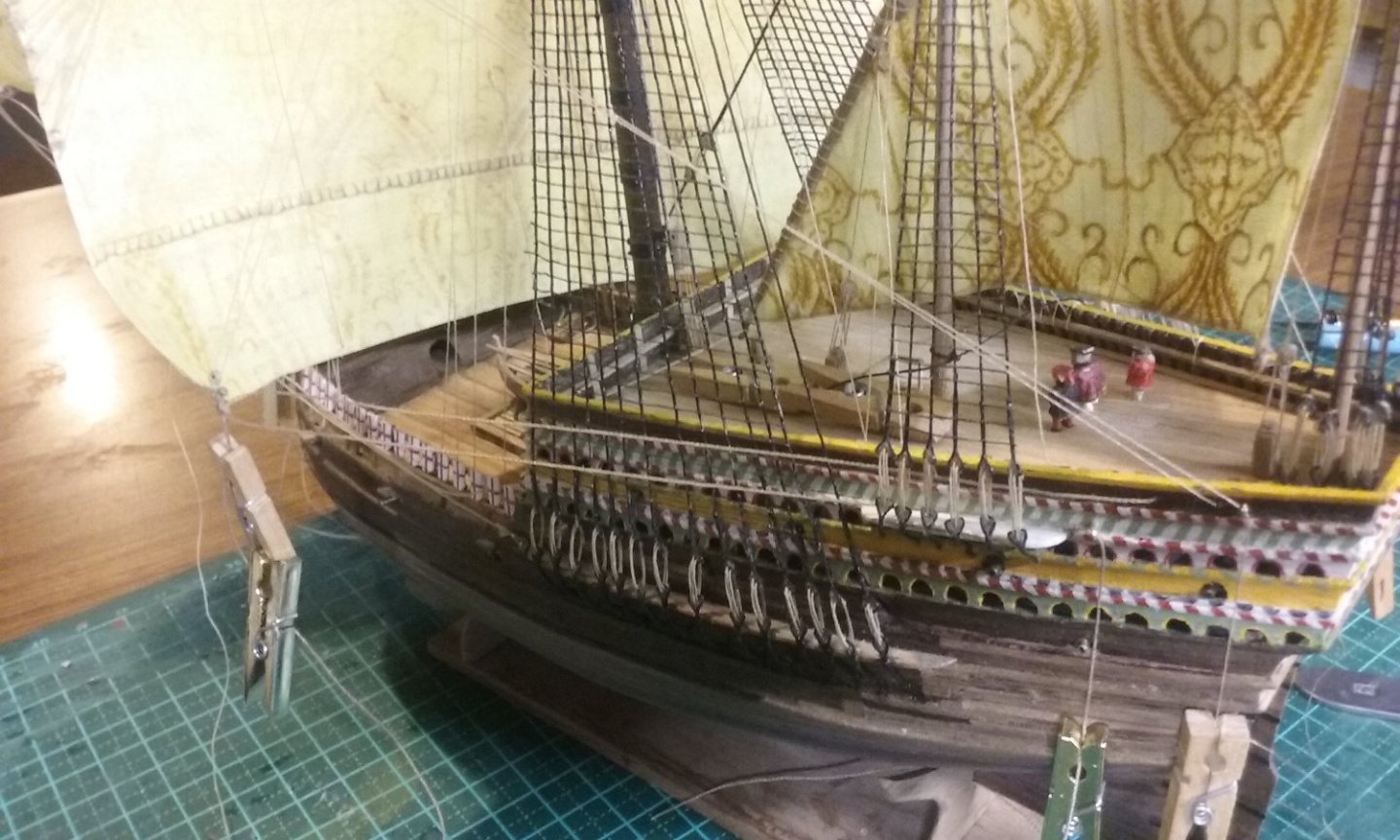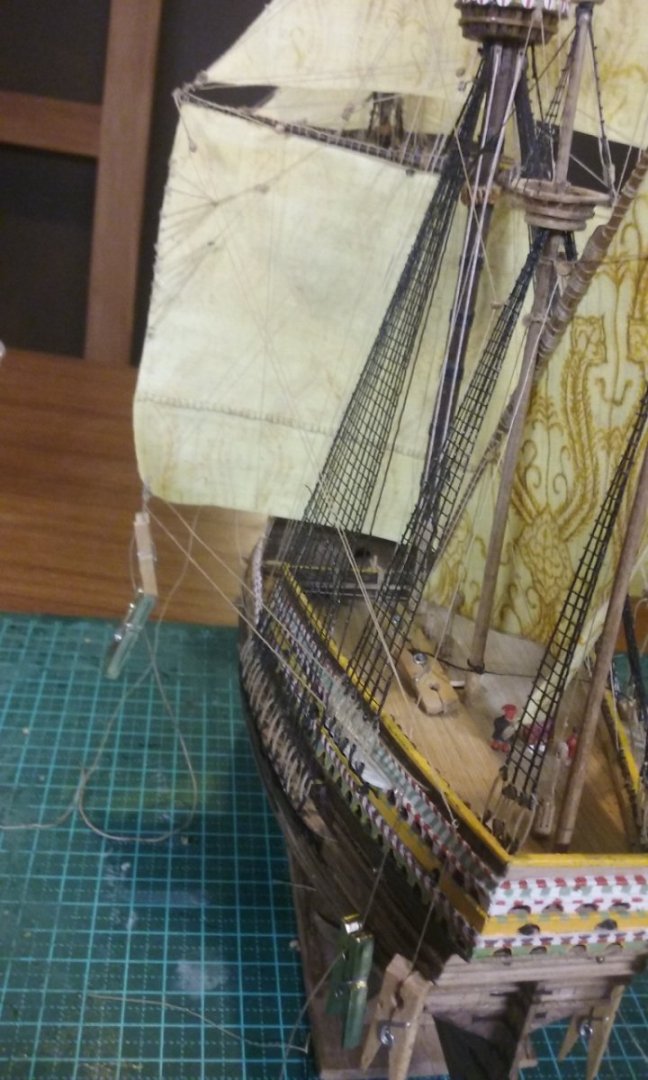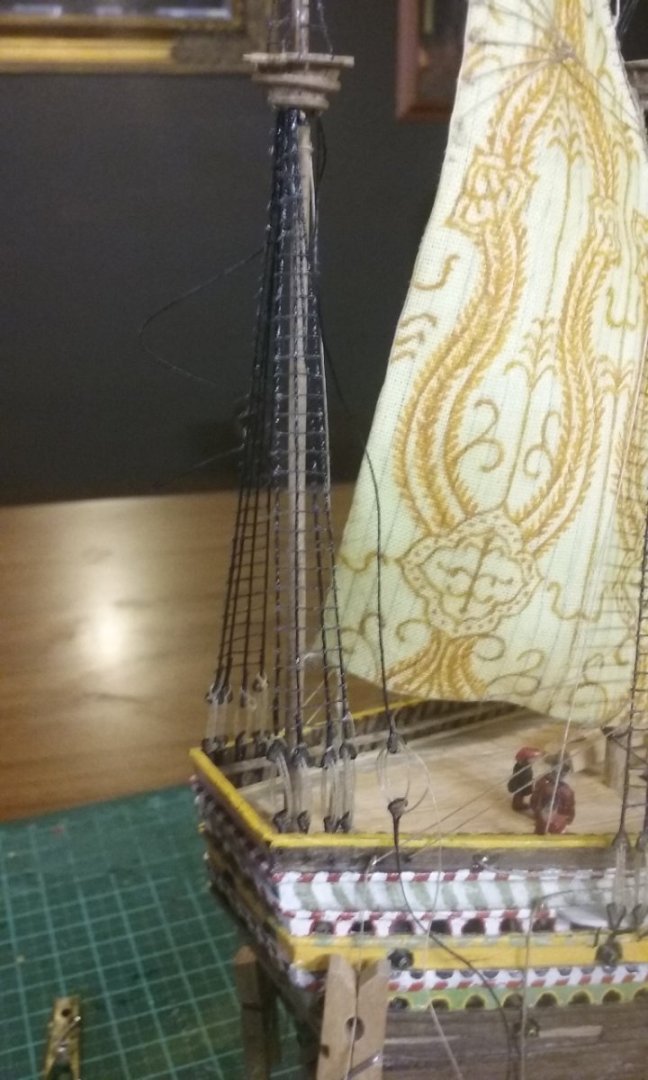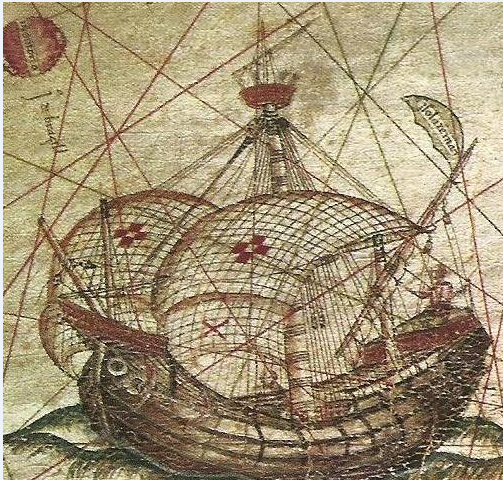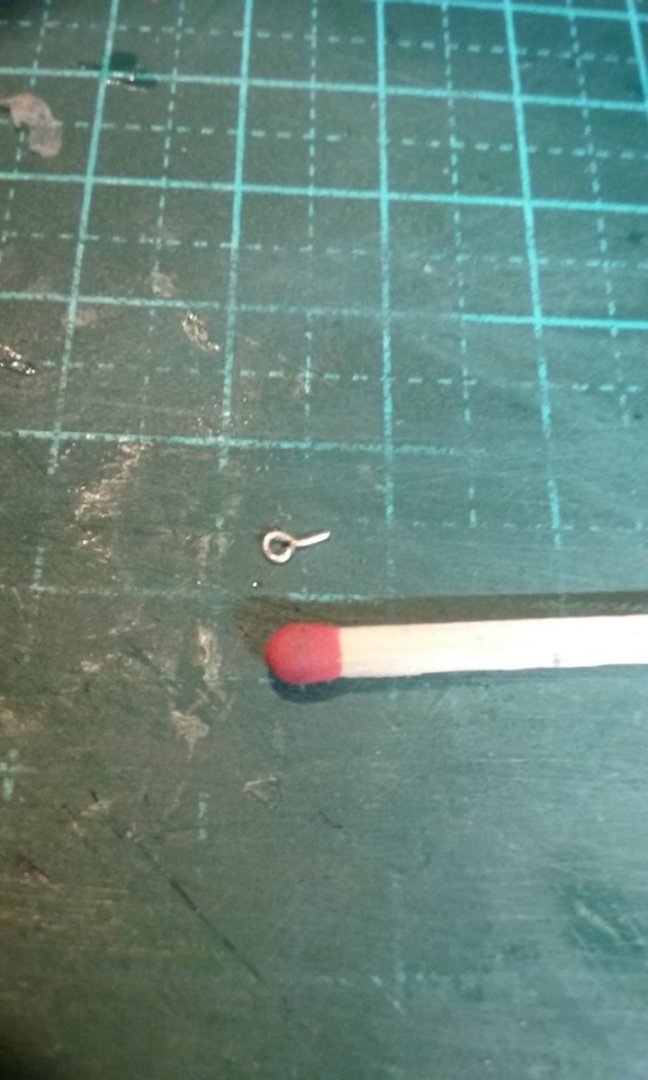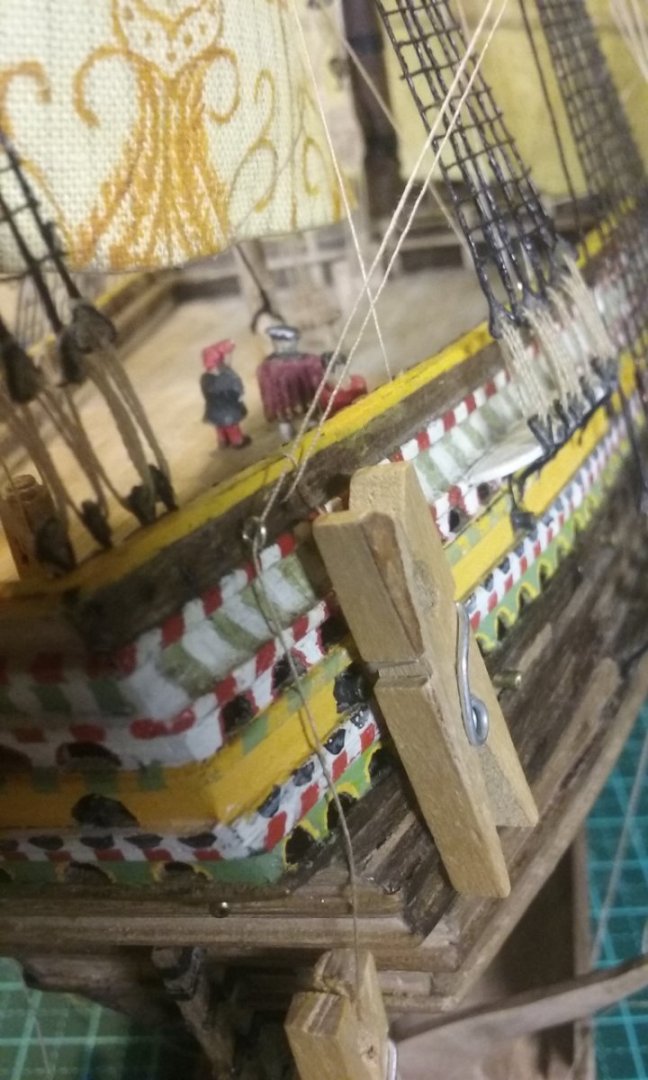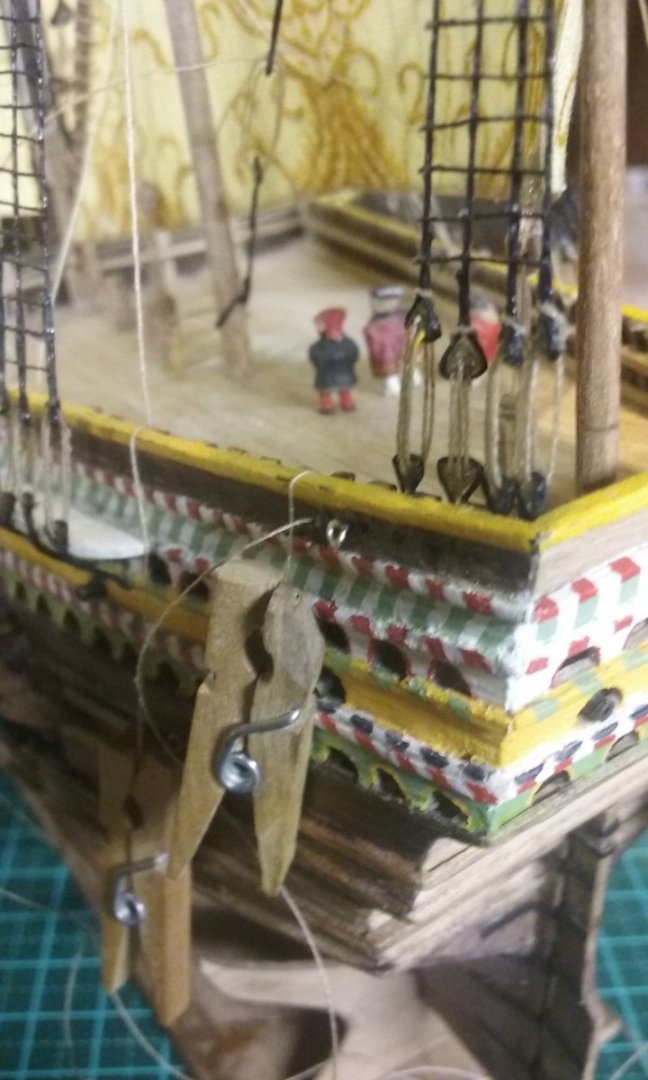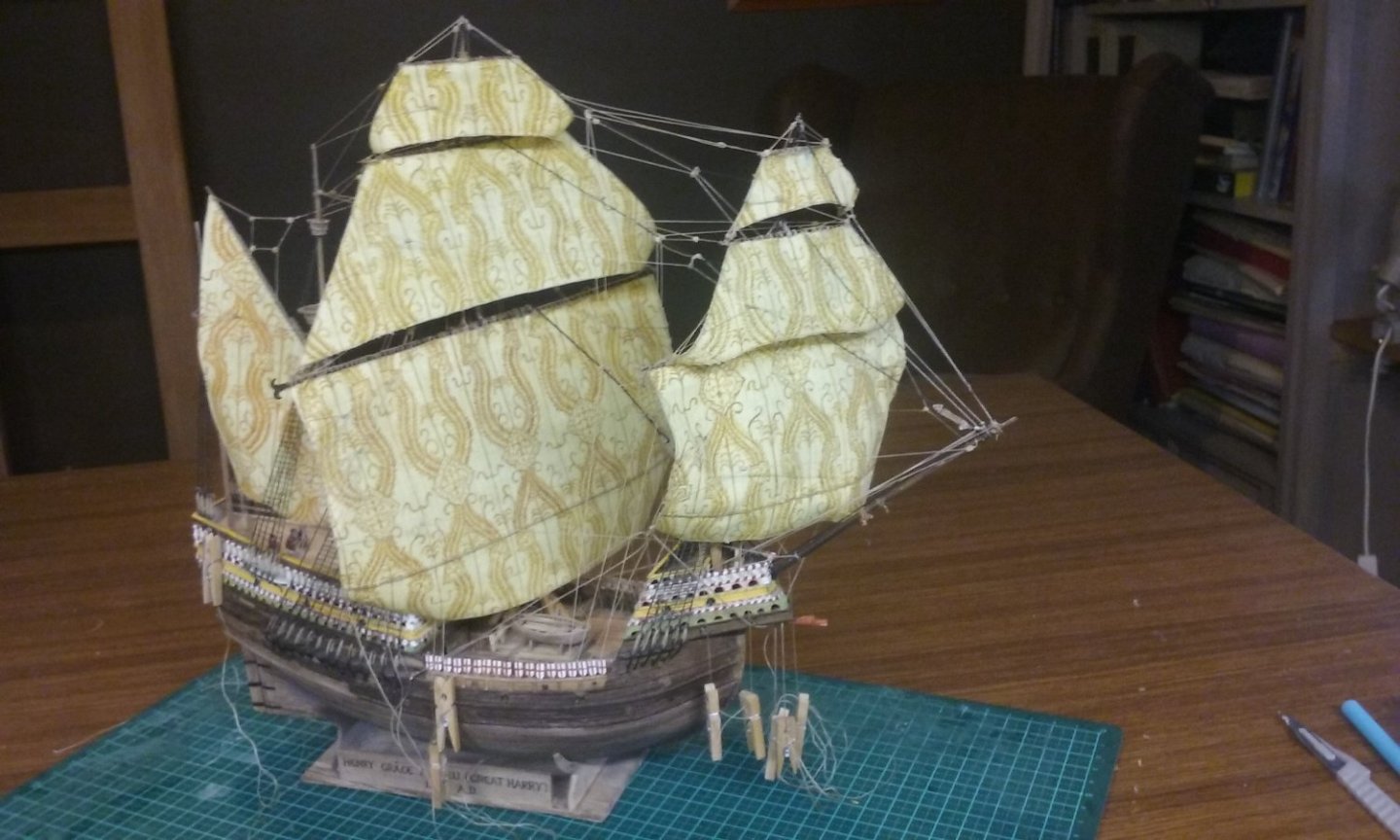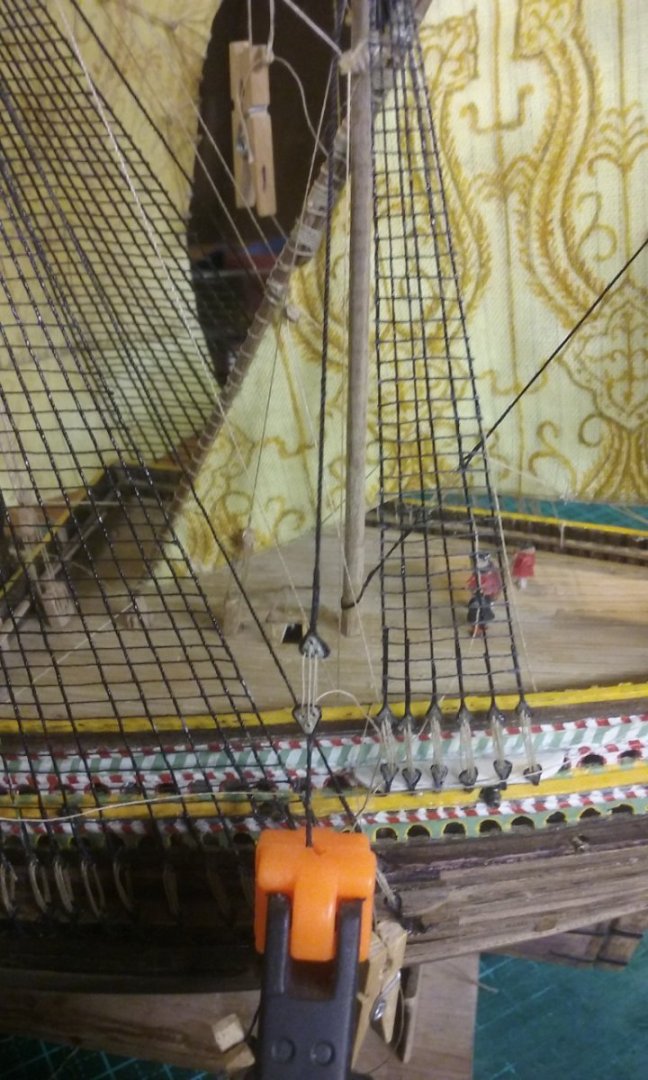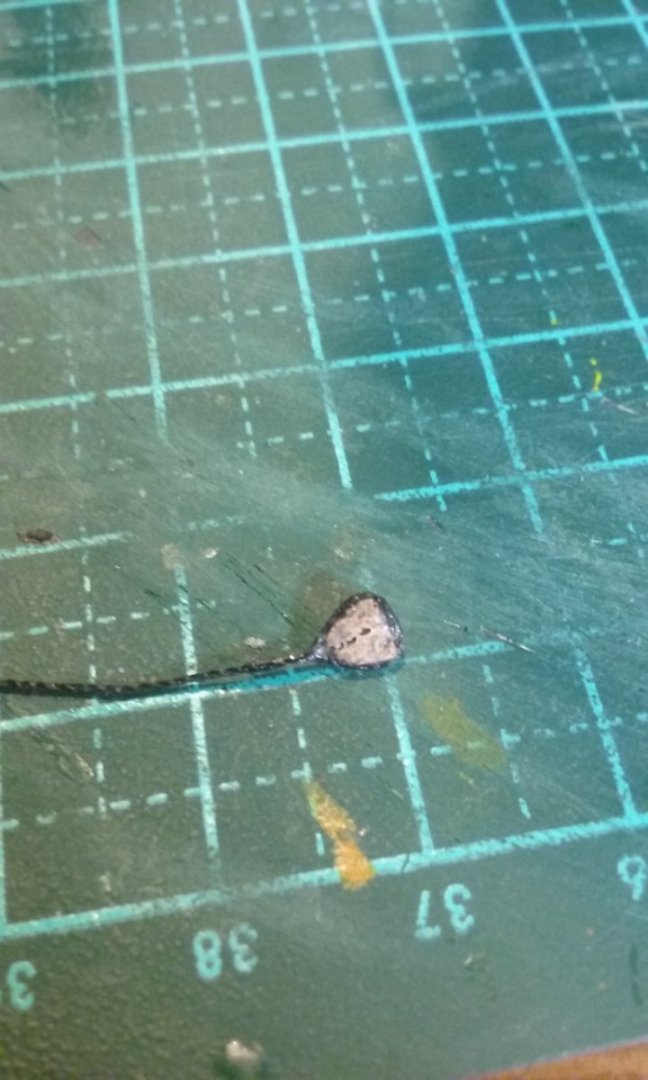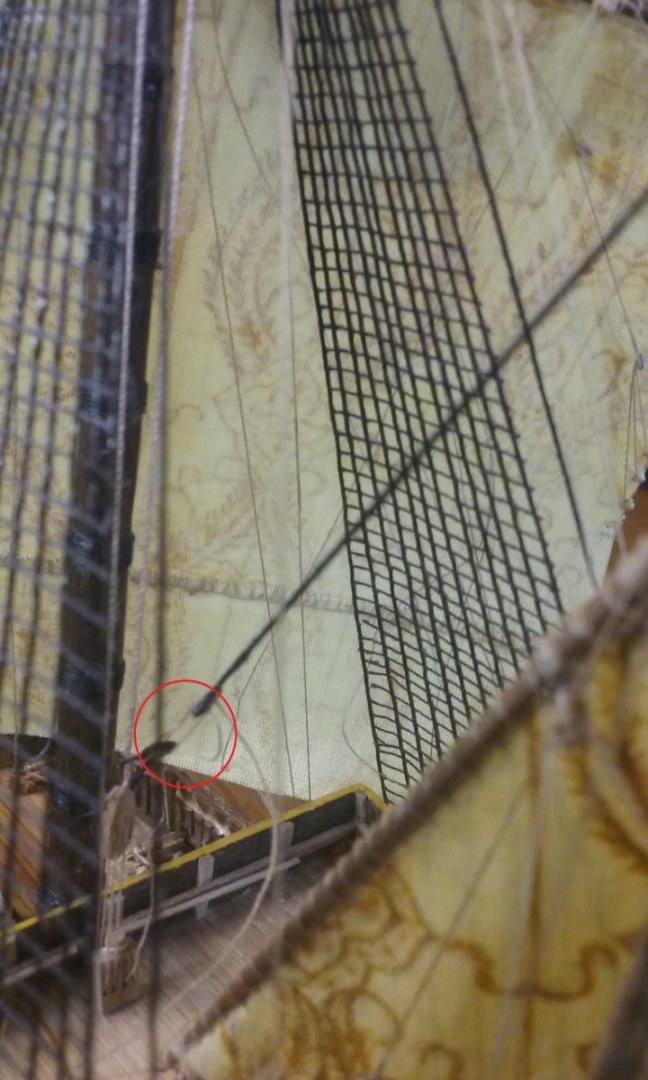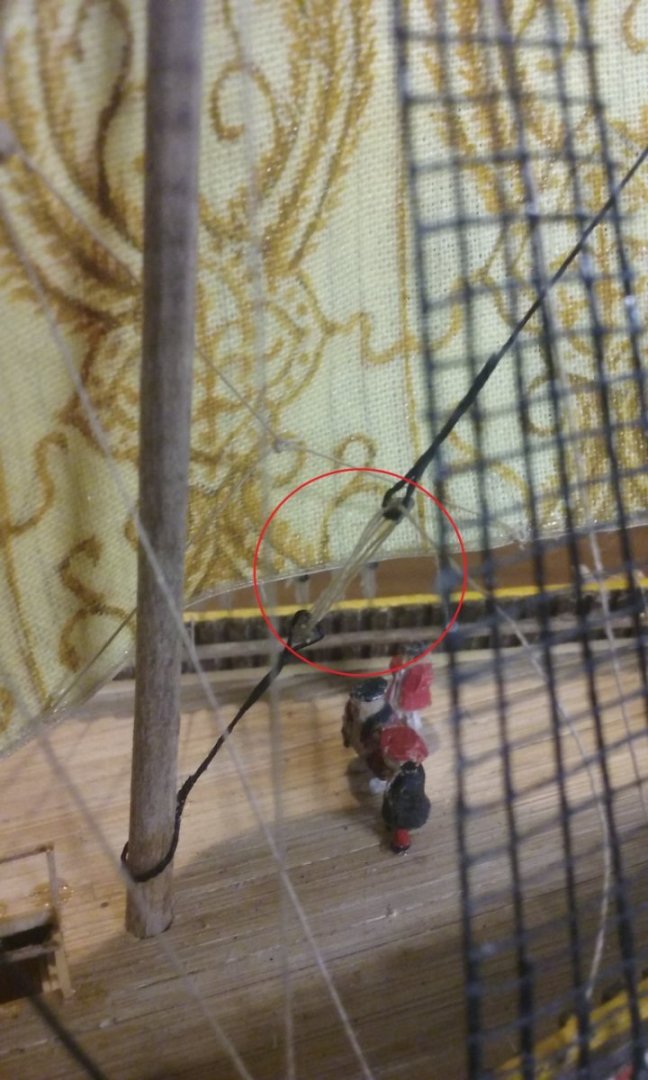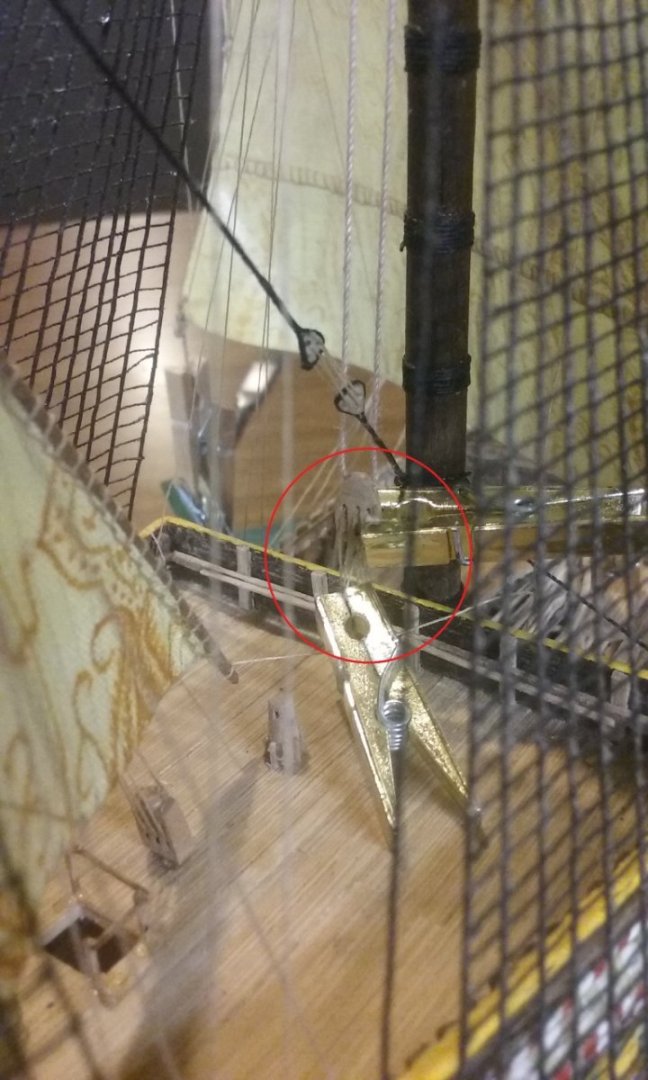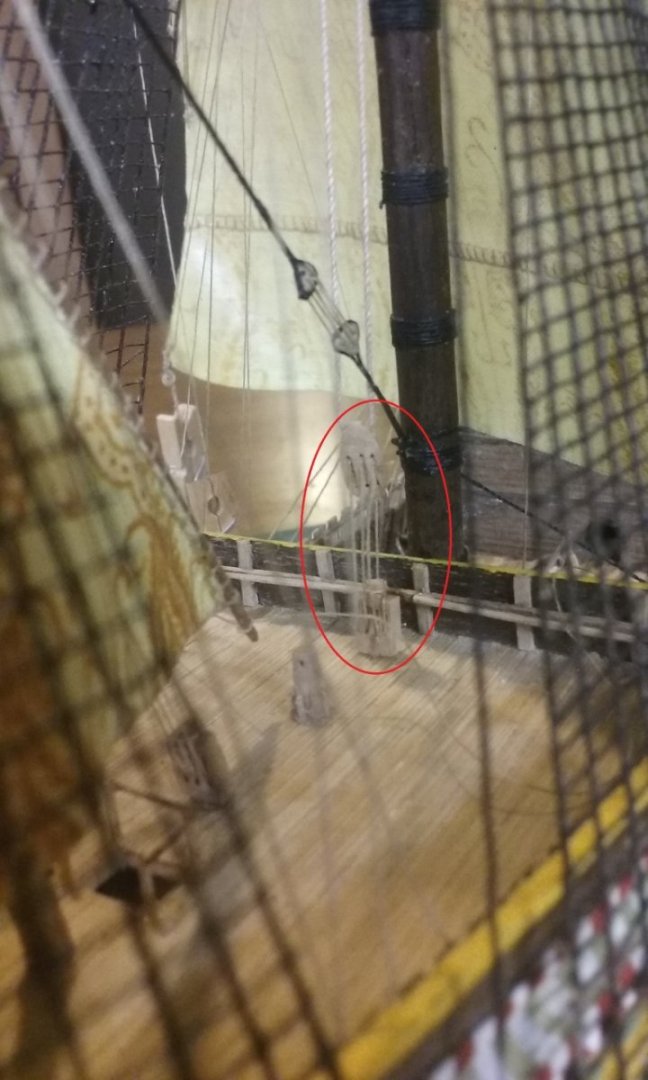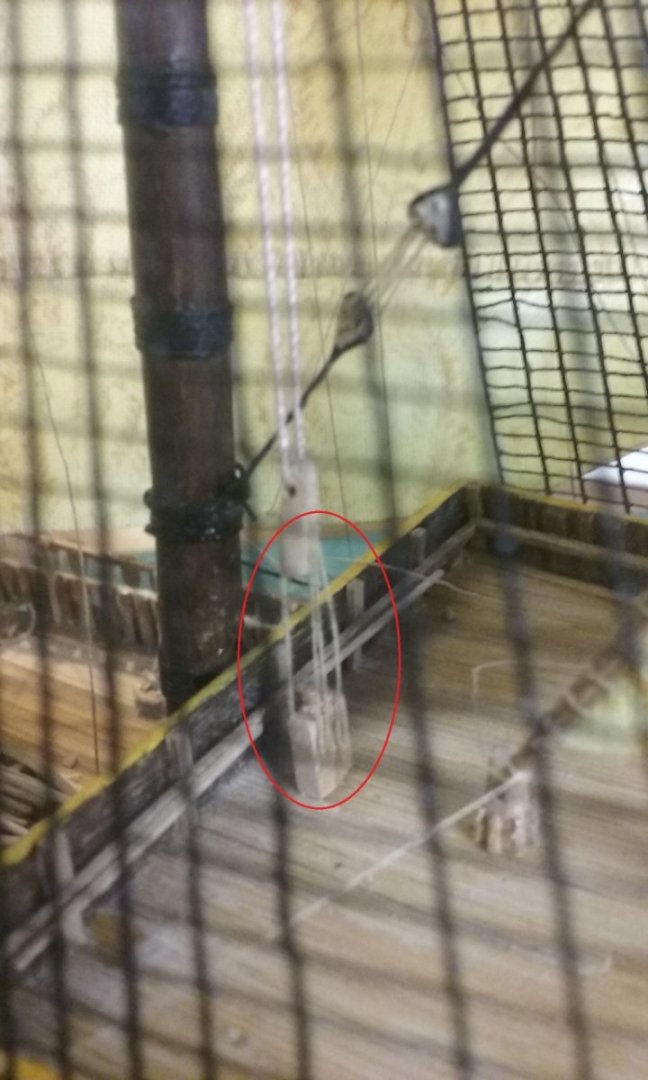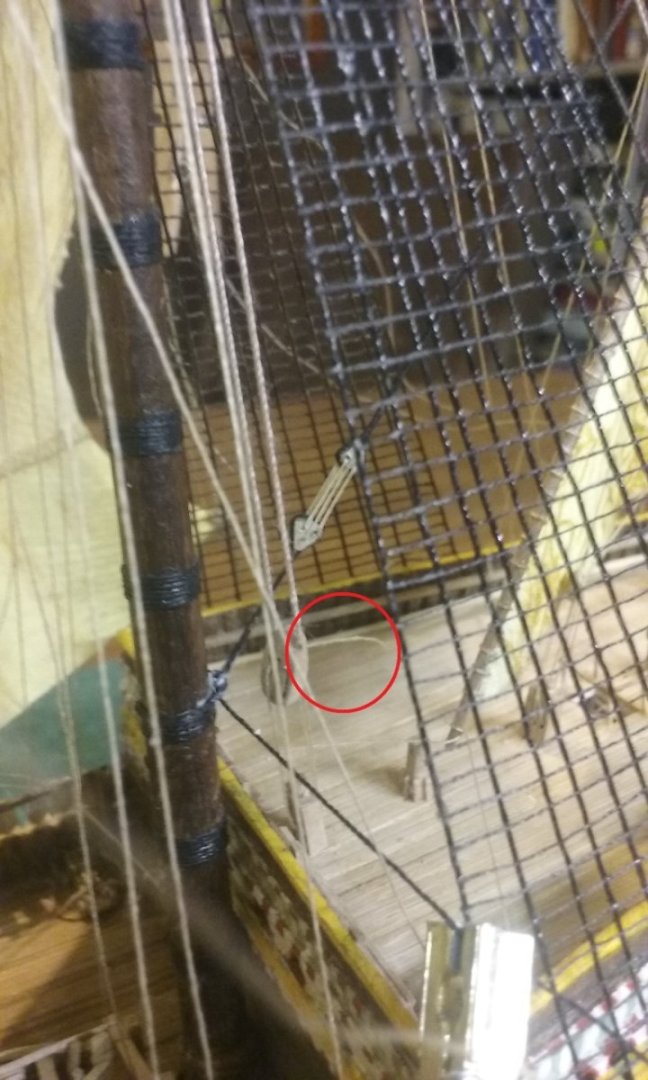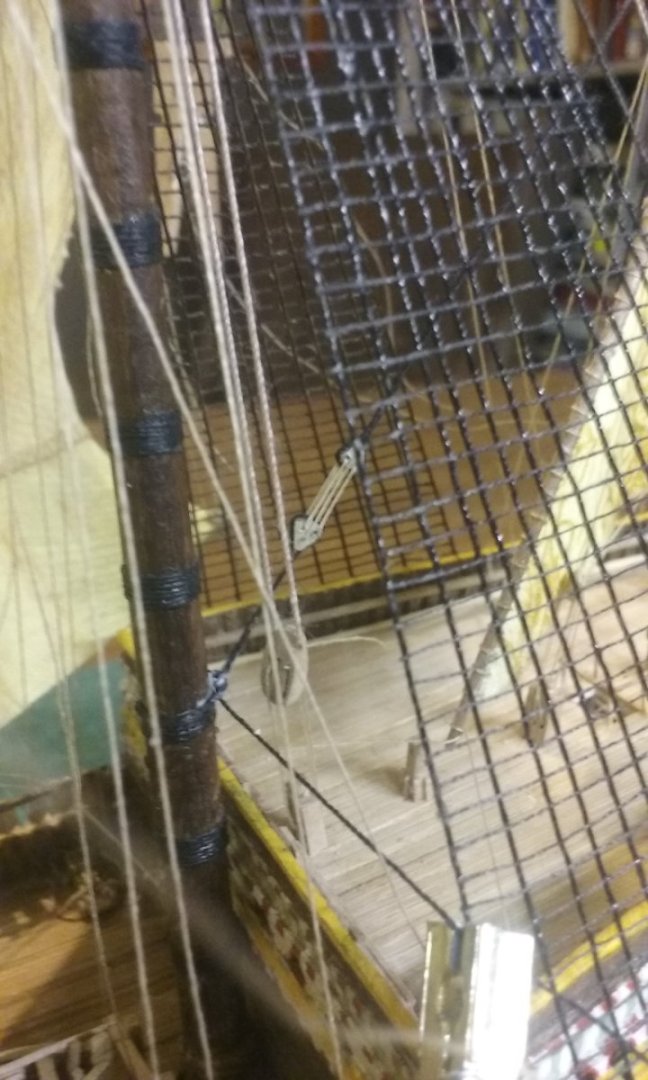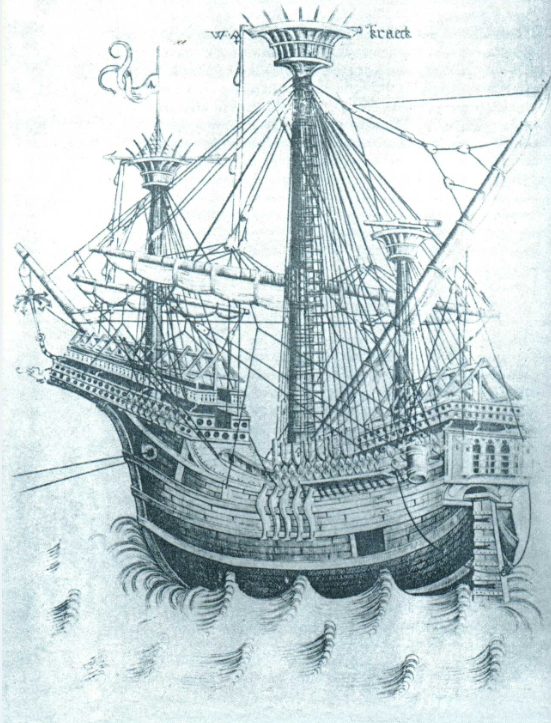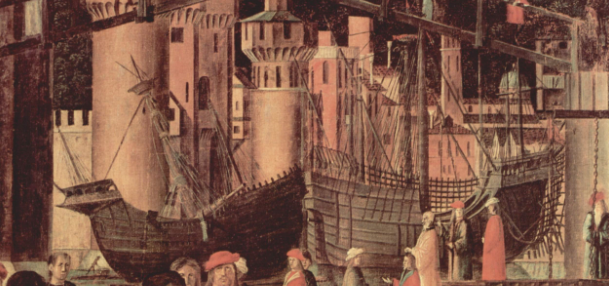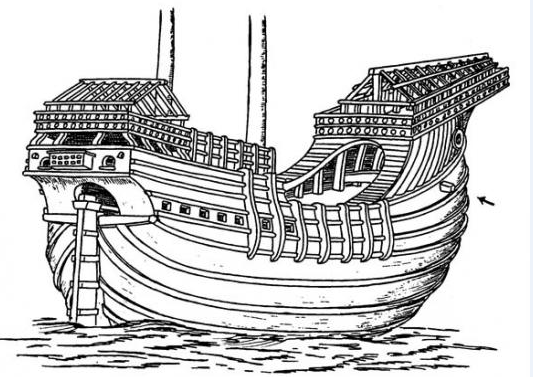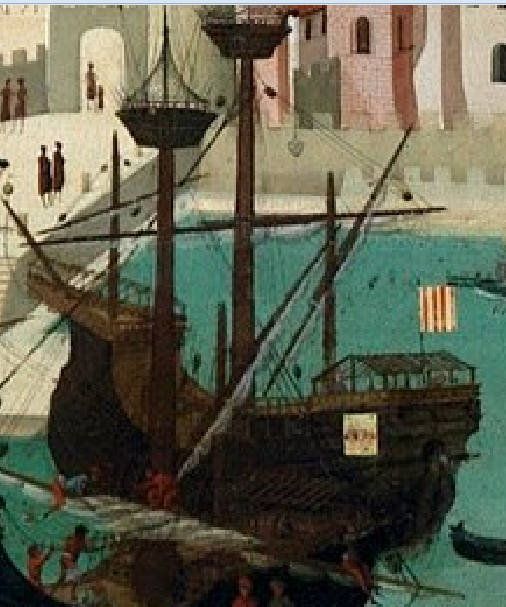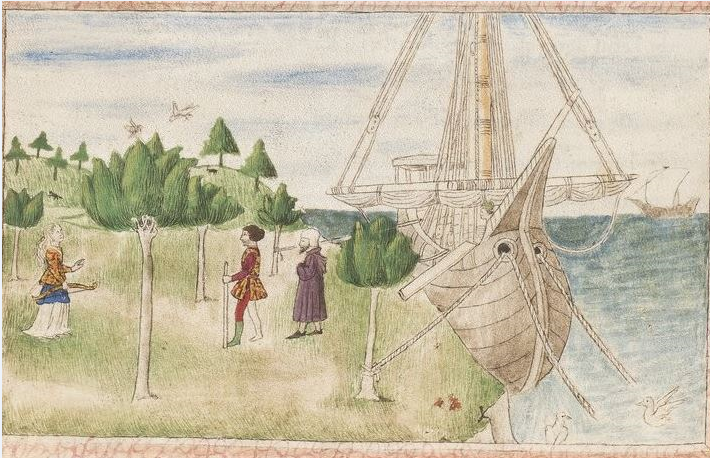-
Posts
7,973 -
Joined
-
Last visited
Content Type
Profiles
Forums
Gallery
Events
Everything posted by Louie da fly
-
Oh, yes. I'm very familiar with that one - just never heard it called by that name. Yes, it's wonderful - and it's been pointed out that all the 'round ships' in the pic are smaller versions of the main one. I keep going back to it for information because it's so full of detail and interest. I had at one time thought of building a model of her, but there's too many other ships I also want to build. Yes, Henry V's "super-ship". Some of her still exists below the mud in the river Hamble, along with another they think is the Holigost. Steven
- 740 replies
-
- Tudor
- restoration
-
(and 4 more)
Tagged with:
-
Thanks everyone for the likes and comments. Druxey, thanks. I've also changed the colour of his jacket, as they were all looking a bit same-ish. Ferrus Manus - exactly. The outrigger is made, but won't be put in place until right near the end -too much chance of breaking it. Steven
- 740 replies
-
- Tudor
- restoration
-
(and 4 more)
Tagged with:
-
Johnny, I think the pre 1536 GH (my abbreviation) would have been rigged as you suggest, and perhaps the post-1536 would have been similarly rigged, though it's possible she had topgallants as shown on the Anthony Roll. You're probably right about the forecastle and aftercastle being reduced in height in the rebuild. Yes, I've read that GH was built as a reply to the Great Michael (which never really got used, and ended up getting sold to France IIRC. I've read that GH was 1500 tons burthen, (while the Mary Rose was 1000) but I don't know what date that relates to. I certainly don't think she'd have had lateen topsails or topgallants in everyday use (though the Embarkation shows topsails on both mizzen and bonaventure, it also shows them as square rigged!) I've been told that the Embarkation was probably painted about 1545, despite showing an event of 1520. Can you refer me to the painting of the marriage party of 1521? I don't know this one. I've taken most of my interpretation from Landström's reconstruction, which based on both the Embarkation and the Anthony Roll depiction, also of 1545. I included the cloth-of-gold sails because - well, they're way cool. Now, here are the latest additions. Parrel truck for the bonaventure lateen "course" Mizzen topgallant with sheet, lift etc. "Outriggers" for the bonaventure lateen sail and topsail. More work on the bonaventure parrel truck. A bit fiddly, but I got there eventually. Note also the matchstick being used to form the "belly" of the mizzen lateen - I'd had the buntlines too tight and the sail got a kink at the lower edge. So I dampened it and gradually smoothed out the curve. You might also notice that Henry now only has two courtiers with him - one of them got dislocated while I was trying to install some of the rigging. I've left him off until there's no more rigging to be done and then I'll put him back in place. Same thing happened to one of the grapnels at the ends of the mainyard. It'll go back when the model is complete enough so I don;t accidentally break it off again. The mizzen topgallant in place and rigged. And the match further along, forming the belly at the foot of the lateen. And jumping ahead, here's the ship with all the lateen sails on it and rigged. Only the spritsail to go! Steven
- 740 replies
-
- Tudor
- restoration
-
(and 4 more)
Tagged with:
-
I use miniature clothes-pegs, available from craft/stationery stores. They work well, and don't have teeth. I've managed to buy them both in wood and in plastic, and I've trimmed off the business end of several of them to have a right angle at the point of contact with the rope (but not the ones in the picture! ). Steven
-
Mizzen lateen course [is that the right name?] rigged. Here's the sheet, starting from ringbolts at the taffrail, through a couple of blocks, and belayed off to one side. And here is the lateen topsail placed in position and the parrel (a simple loop of cotton) glued in place. Added a block for the topsail lift. Anderson proposed that the lateen topsail might be sheeted to the yard of the lower lateen, but there's not room for that in the model's configuration, so I've gone with Landström's version - of a spar sticking out aft from the mizzen top. Even then I've done it a bit differently, because I can't see how Landström's version would have any rigidity. And here is the mizzen topsail in place and fully rigged, with sheet and a simple lift. No tacks; Anderson thought they probably weren't needed. And the lateen topgallant in place but not yet rigged. But you can see the block for the lift at the very top of the mast. Landström was of the opinion that the upper lateen were only for show anyway, and would not have been used at sea. But they do look cool. While working on the mizzen sails, I was also getting the lower lateen ready for the bonaventure. Loose threads for the martnets and buntlines. Double sheaved block for the martnet tackle. Martnets. Getting better at these. Buntline And all installed, tied off and trimmed to length. This time I've kept the central rope on the buntline loose for the time being - I found it was too tight on the mizzen lateen and interfered with the 'billow' of the sail. I'm changing that on the mizzen, too, so it will have a nice smooth curve at the bottom. And that's as far as I've got today. Steven
- 740 replies
-
- Tudor
- restoration
-
(and 4 more)
Tagged with:
-

Did lateen masts have wedges?
Louie da fly replied to knightyo's topic in Masting, rigging and sails
Te trouble is that most artists don't bother to show details like wedges. This one is unusual in that. And there's the fact that most pictures of ships aren't from a viewpoint that shows the bottoms of the masts. The pic below is from Botticelli's Judgment of Paris - unfortunately it loses definition when you blow it up, but it might depict wedges around the mizzen. As might this one - 1500 approx. by Octavian de Saint Gelais, France. Probably from his translation of the Ovid. This one (source unknown) seems to show wedges, but that's on the main mast - unfortunately you can't see the base of the mizzen. Best I could do. On the other hand if you put wedges in nobody will be in a position to tell you that you're wrong! Steven -

Did lateen masts have wedges?
Louie da fly replied to knightyo's topic in Masting, rigging and sails
Yes, have a look at these pictures. I'm pretty certain these things around the masts are early wedges. From the Cantigas de Santa Maria - Spanish, late 12th century. And yes, these are lateeners. Steven -
Well under way, mate! God to see another of these being built. I love the ancient and mediaeval ships, particularly the unusual ones - something that isn't a Viking longship or the Santa Maria. I'll pull up a pew and get the popcorn under way. Steven
- 56 replies
-
- Sea of Galilee Boat
- SE Miller
-
(and 1 more)
Tagged with:
-
Maybe I should have included that giant match stick in the photos . . .
- 740 replies
-
- Tudor
- restoration
-
(and 4 more)
Tagged with:
-
Bonaventure stay. I did the same thing with this (wet and glued the lanyards) as I did with the mizzen stay. Worked well. I wish I'd thought of this with the lanyards for all the shrouds - they would have been a lot tidier. Unfortunately this isn't a lesson I can use in future builds. If I do another ship with deadeyes on shrouds it will be at a bigger scale and I don't think I'll need to use this technique. Top end and bottom end of stay. Held taut while the glue dried using weights, pegs etc. A bit fiddly, but worked ok. And trimmed to length top and bottom. And for those who are interested, here's the whole procedure I use in making a block. No sheave of course - far too small. The timber is pear wood, the glue is PVA (white glue).
- 740 replies
-
- Tudor
- restoration
-
(and 4 more)
Tagged with:
-
Not sure if this is appropriate to this discussion, but here is the halyard of a (yes, I know, lateen rigged) dhow being pulled horizontally, which I think illustrates Dr PR's point.. Steven
-
Damn - I thought it was to do with your surname! Steven
- 72 replies
-
And more . . . Bonaventure stay being replaced. The collar on the mizzen mast under way. Note the small loop to take the lower section of the stay. The stay with its deadeyes glued to the bonaventure mast just below the top, hanging free till the glue dries - I'll do the same as I did with the mizzen stay.. And the mainbrace and main sheet loosely in place. Steven
- 740 replies
-
- Tudor
- restoration
-
(and 4 more)
Tagged with:
-
Yes, these main courses were enormous, at least on carrarcks, and the main mast was equally enormous - had to be to deal with the forces involved. Here's an example from a Venetian portoloan of 1482 by Grazioso Benincasa. Steven
- 740 replies
-
- Tudor
- restoration
-
(and 4 more)
Tagged with:
-
From the wreck of the Geonoan carrack La Lomellina (sunk 1513, probably built 1503), the estimated proportions were Length of keel 33.38 metres, width at master frame 14 metres, overall length 46.45 metres. IIRC they recovered the whole length of the keel and over half of the ship amidships, (she sank on her side, like the Mary Rose) so these estimates should be pretty reliable. That gives the ratios length of keel to width = 2.38 overall length to width = 3.32 You could also check out the Newport ship, though much less of the upper hull has been preserved because she sank upright, so you may not be able to determine the full width of the ship. Steven
- 72 replies
-
Beautiful work as usual, Dick. She's really starting to take shape. Steven
- 142 replies
-
I realised I'd forgotten to thank everybody for the supportive and encouraging comments. So, thanks everyone, for those and for the likes. Very much appreciated. Steven
- 740 replies
-
- Tudor
- restoration
-
(and 4 more)
Tagged with:
-
Working on the mainsail braces. I already had three eyebolts I'd made earlier. I needed two for the braces and another two for the sheets. So just one more to make. Eyebolts in place, starboard and port sides. I drilled holes in the bulwarks for the standing and free ends, glued the free end through one hole and the eyebolt through the other. I came up against problems caused by an earlier decision I'd made. When I put on the lower stays for the mizzen and bonaventure masts, each was to be tensioned with a pair of deadeyes. I thought at the time I was being clever by leaving them a bit loose (to allow for things moving), but when it came to tightening them they wouldn't tighten. In each case I couldn't get the lanyards to move through the holes in the deadeyes, so I ended up with loose loops of lanyard. Mizzen stay Bonaventure stay To fix the mizzen stay I had to cut the lanyards and completely remove the lower end of the stay and its deadeye. Turns out even when the deadeye was available I couldn't get the lanyard out of it - it was stuck fast - perhaps glued into position. Having a good look at the deadeye I realised why. It was one of my earlier attempts, made of pear wood. It had split (as most of them did) and I'd glued it back together. The lanyards passing through the holes got stuck by contact with the (supposedly dried) glue, so of course I couldn't tighten them. Here is the deadeye (both sides) after I'd re-drilled the holes. It was obviously beyond redemption. However, I was fortunate enough to have made quite a few second generation deadeyes out of card, which I'd never used. I grabbed one of these, made a new lower end for the stay and added the lanyards, this time tightening them to the length I wanted. Because cotton thread is springy, I made them straight by soaking them with a weak solution of PVA (white) glue and putting the whole assembly under tension. I hadn't been all that thrilled with the lower end of the stay anyway - I'd had it go around the mast on an angle, which I wasn't sure was correct (I'm still not sure). But this time I put a "collar" on the mast, merged with one of the wooldings, but with a tiny loop in it, just big enough for the end of the stay to pass through. Then I pulled the free end off to one side and temporarily clamped the end to the shrouds to make the whole assembly tight, and glued the halyard into place in its loop on the collar. When the glue was dry I ran the free end around the mast over the top of the woolding (to make it more secure), glued it in place and trimmed it to length. The next project was another repair, also of a lanyard, but this one had come adrift. It was on the halyard for the mainsail. I think I'd trimmed it to length and the glue must have come unstuck so the end of the lanyard came back out of the hole in the knight. You can see it in the photo below - with the red circle around it. A much harder proposition. I agonised over how I was going to fix it. I didn't have enough free end to thread it back through the hole, and it probably wouldn't have gone through anyway. Add to that the springy nature of the cotton thread, it really didn't want to co-operate at all. I thought of several possible solutions, none of which I was happy with - and they probably wouldn't have worked anyway. Finally I did something simple - it's cheating but it worked well enough for me to be happy with it. I soaked the free end of the lanyard with water so it wasn't springy any more, then clamped the bottom down with a tiny peg so it was running down the face of the knight, just where it would have been if it was doing its duty properly. (Keep in mind that I was having to put my hand in this tiny space past a multitude of ropes, none of which I wanted to disturb). I put glue on the lanyard to fix it to the face of the knight, then washed most of it off with a wet watercolour paintbrush. I haven't yet sorted out the bonaventure stay. That has to wait till next time. In the meantime, here she is in her current state. Steven
- 740 replies
-
- Tudor
- restoration
-
(and 4 more)
Tagged with:
-
From what I can make out, you and Snug Harbor Johnny are making pretty much the same point, and it makes a lot of sense to me. Steven
-
Lots of food for thought here. Thanks everybody for your input. As I mentioned above, I am no sort of expert on rigging - in fact it generally makes my brain hurt - so now I'll have to sit and think about it. Fortunately it's not something that vitally affects any aspect f a model in progress - it was mainly curiosity, wondering what it could possibly be for when I couldn't see a reason for doing it that way. I certainly understand rigging far better having spent some months applying Anderson's The Rigging of Ships in the Days of the Spritsail Topmast to my Great Harry, but I'm still just working through it, trying to get my head around it all. Yes, I agree. I've also seen them called fiddle blocks and Anderson calls them sister blocks - as far as I can see, all the same thing - a block with two sheaves, one above the other instead of side by side. Your explanation makes sense, particularly as I've seen a similar function carried out by a fiddle block on the martnets of the Great Harry. Anyway, thanks again, everybody. I appreciate your help. Steven
-
Yes, I agree that artists probably exaggerate the angle of the forecastle in many depictions. But the more reliable ones (Carpaccio, Master WA, Bonfigli and others) show it as quite reasonable. I don't have any doubt that the arrangement would work to raise and lower the yard if I'm correct in thinking the falls/downhauls are among the vertical ropes coming down next to the mast - I just can't figure out why they'd have the lower sheave. It doesn't seem necessary. Steven
-
OTOH, this detail from the Tavola Strozzi of 1465 shows lifts which seem to have a similar arrangement (if that's a rope going through a lower sheave - I can definitely see two lines there).
-
Here's a picture from 1457. It's from "Hesperis" - a fantastical biography of the Italian nobleman Sigismond Malatesta. The mainyard has been lowered. I had a look at the lifts; this is one of the few contemporary pictures that shows them in any detail. At first glance it looks very good. The lift goes from the outer end of the yard to a double-sheaved block (sister block) hanging from the masthead, and back down to the yardarm, plus the upper sheave has a rope passing from the masthead and back up again. But though I'm no rigging expert (that's for sure!) it seems to me that the artist has got it wrong - surely it can't work like that. The rope passing through the lower sheave doesn't seem to do anything - it's got no "fall" - nothing to pull on to adjust it. And the same applies to the rope going through the upper sheave - where are the "falls"? I suppose they might be among those vertical ropes coming down from the masthead. But why have lower sheave in the sister block, with two fixing points on the yardarm? To reduce the forces involved, or possibly even them out? I dunno. Any advice or explanation would be greatly appreciated. Steven
About us
Modelshipworld - Advancing Ship Modeling through Research
SSL Secured
Your security is important for us so this Website is SSL-Secured
NRG Mailing Address
Nautical Research Guild
237 South Lincoln Street
Westmont IL, 60559-1917
Model Ship World ® and the MSW logo are Registered Trademarks, and belong to the Nautical Research Guild (United States Patent and Trademark Office: No. 6,929,264 & No. 6,929,274, registered Dec. 20, 2022)
Helpful Links
About the NRG
If you enjoy building ship models that are historically accurate as well as beautiful, then The Nautical Research Guild (NRG) is just right for you.
The Guild is a non-profit educational organization whose mission is to “Advance Ship Modeling Through Research”. We provide support to our members in their efforts to raise the quality of their model ships.
The Nautical Research Guild has published our world-renowned quarterly magazine, The Nautical Research Journal, since 1955. The pages of the Journal are full of articles by accomplished ship modelers who show you how they create those exquisite details on their models, and by maritime historians who show you the correct details to build. The Journal is available in both print and digital editions. Go to the NRG web site (www.thenrg.org) to download a complimentary digital copy of the Journal. The NRG also publishes plan sets, books and compilations of back issues of the Journal and the former Ships in Scale and Model Ship Builder magazines.



